58 Keeping Room Ideas to Transform Your Home with Warmth and Style
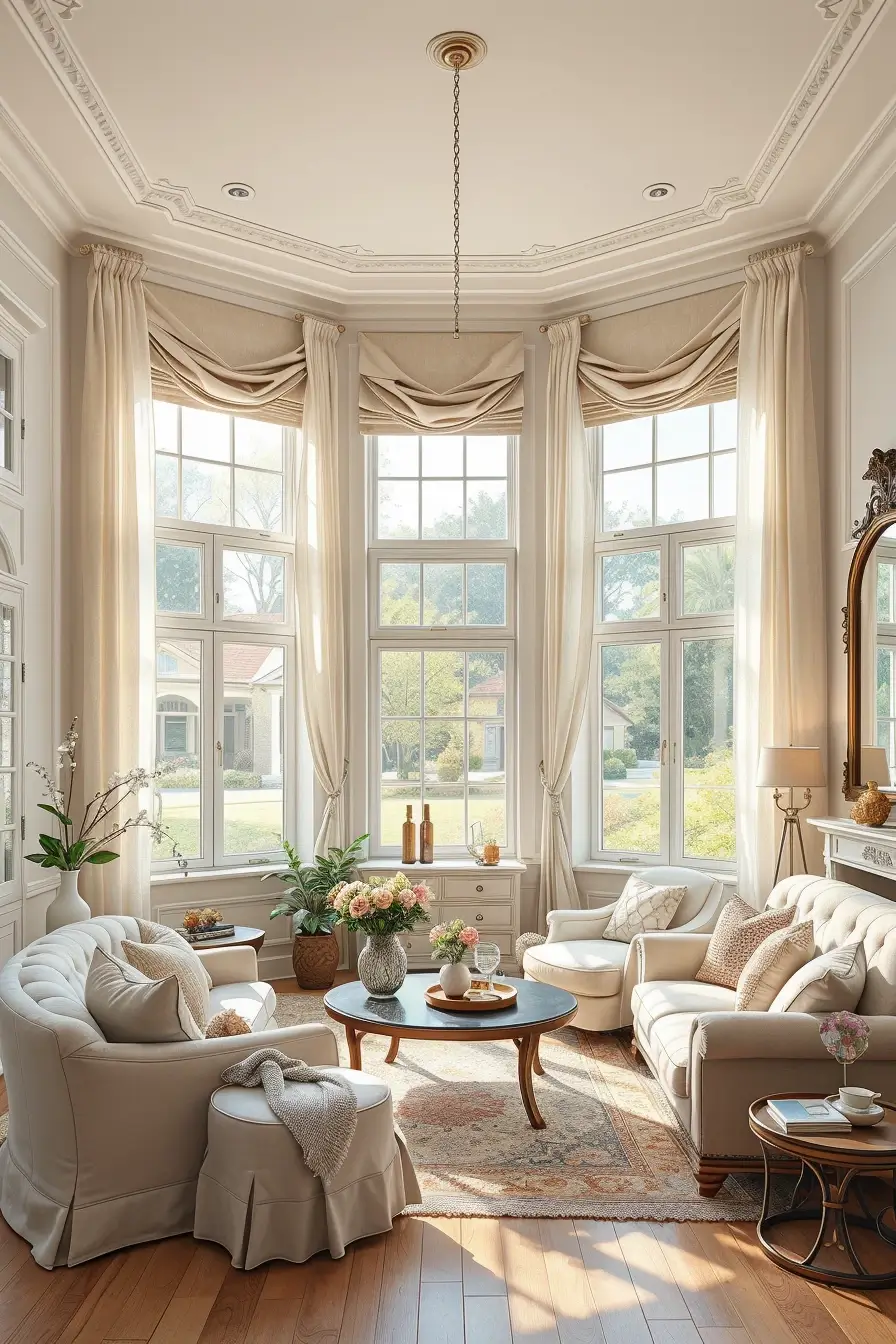
Sometimes you walk into a house and see a keeping room and wonder how to make that part of a home the best part of a home. Are you a person who wishes to have a room that connects kitchen to comfortable living without losing on style or comfort? Here in this article, I am going to lead you step by step in modern, functional, and beautiful examples of a keeping room, that will harmoniously fit into your overall interior design. Whether you’re remodeling or just refreshing the space, I’ll show you how to create a decor concept that enhances everyday life.
Embrace The Heart Of The Home
In my experience, the keeping room works best when it’s integrated into the central energy of the home. It should be near the kitchen, so as to propel interaction and bringing all together. This design enhances togetherness- suitable for the families and receiving guests. By embracing this concept, you’re making the keeping room an extension of your home’s social hub.
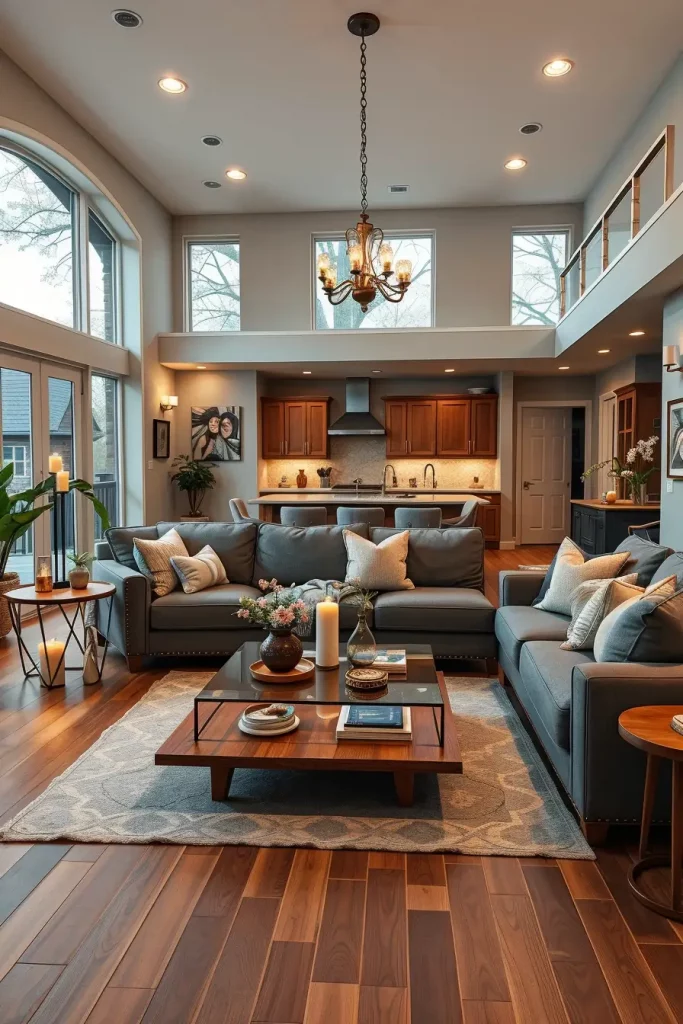
In regards to the layout, I never fail to propose the anchoring the space with a plush sectional or a deep seated sofa and best positioned to see the kitchen as well as a central focus such as a fireplace. Add an extra-sized rug, a coffee table with storage and wall mounted shelving for a practical elegance. Take in consideration subtle embellishments like candles or antique clocks to tone down the look.
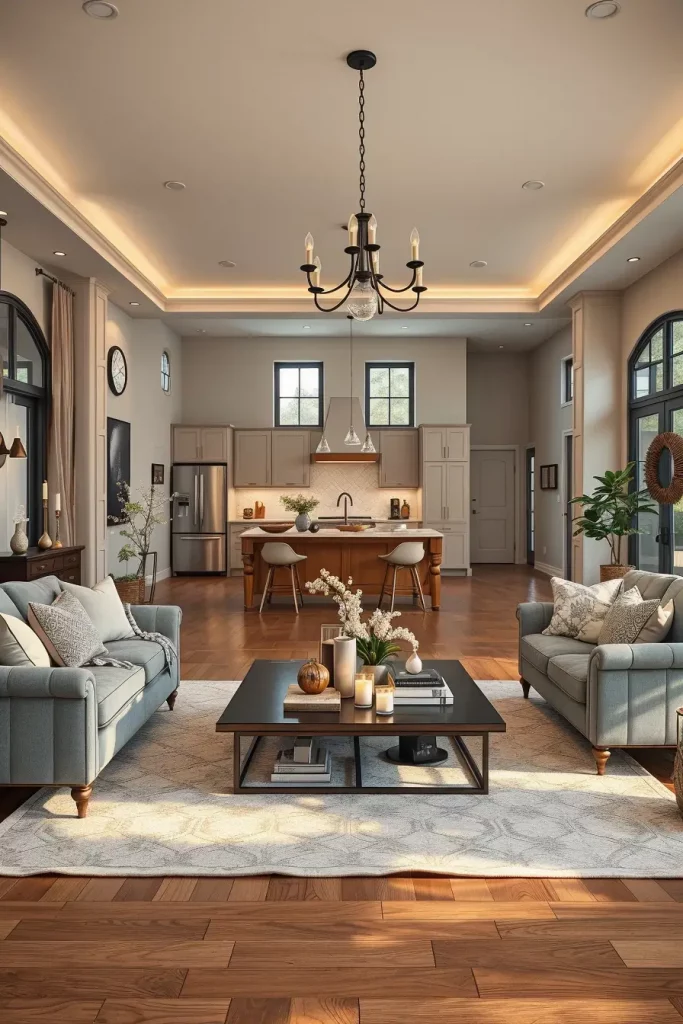
To be more personal, I have found that these rooms are usually the “go-to” for morning coffee or evening unwinding. Famous top designers such as those from Better Homes & Gardens stress on creating “secondary living spaces” that are as polished as the main living room.
Taking this even a step further, I would put a slim console table behind the sofa with stools tucked under. It provides additional seating and can either be a snack bar/homework corner for kids.
Open Floor Plan Transitions That Flow
The flexibility of connection to the kitchen and the living areas is one of the main advantages of a keeping room. I always tend to think about visual and functional flow while designing it. The open floor plan not only makes the best use of available space, but also makes sure that every square feet has a purpose.
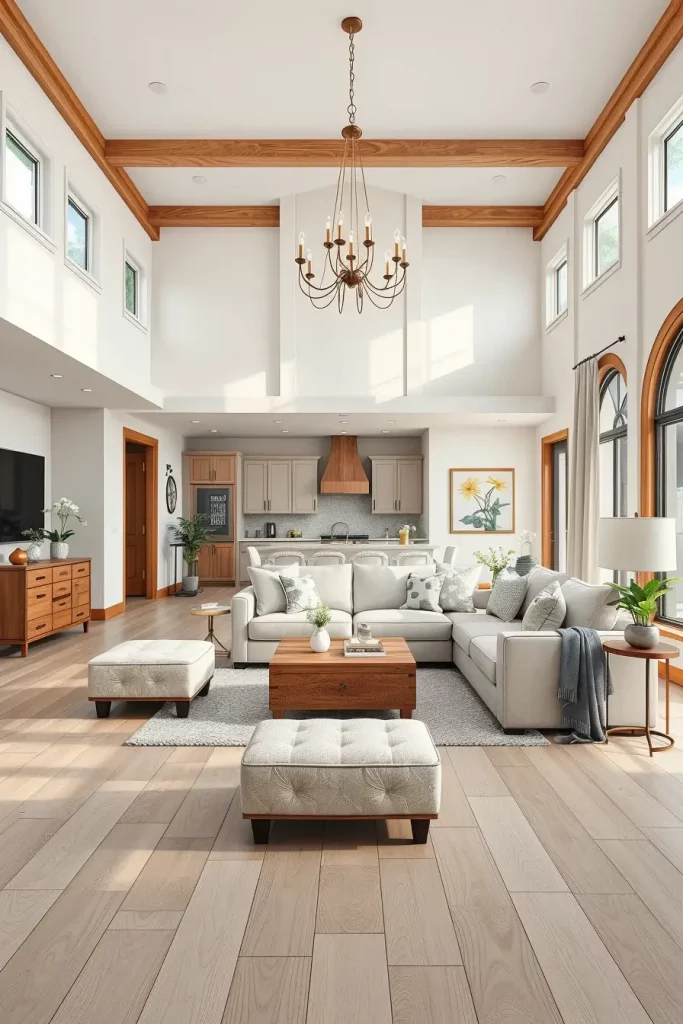
Include uniform flooring in the whole area for harmony. A sofa with a low profile and which does not have tall arms or back maintains sightlines. Use complementary materials, such as wood accents, stone fireplace surrounds, or linen textiles, in order to unite a consistent style through all zones. Create accent in the room using storage furniture such as ottomans or side tables with hidden compartments.
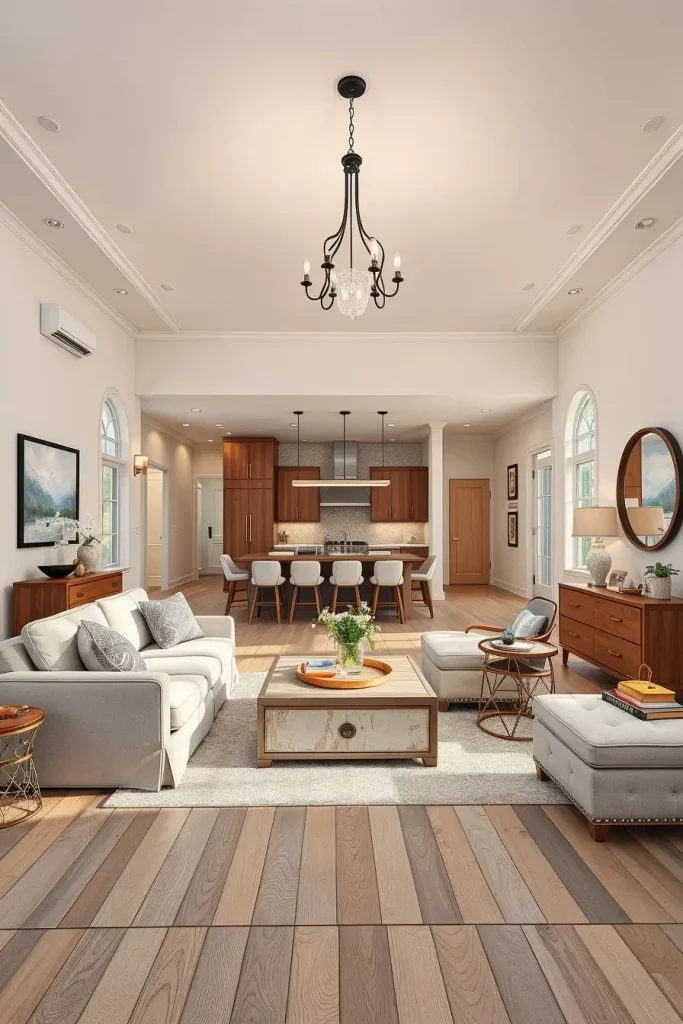
Personally, I really love to use architectural features such as archways or columns, to mark the keeping room without having to enclose it. These tricks just add certain distinction without severing it from the main layout.
If I were to add something to this space, it would be a light feature – a sort of tiered chandelier – which acts as a subtle barrier across the seating area and leads the eyes towards a higher aspect above.
Cozy Fireplace Focal Points
When designing keeping room, that will be warm and inviting, I always begin with the fireplace as the anchor point. A properly placed fire place gives natural focus to the room where all other elements can be placed harmoniously. It creates instant comfort and a time-honoured feel, homely in nature.
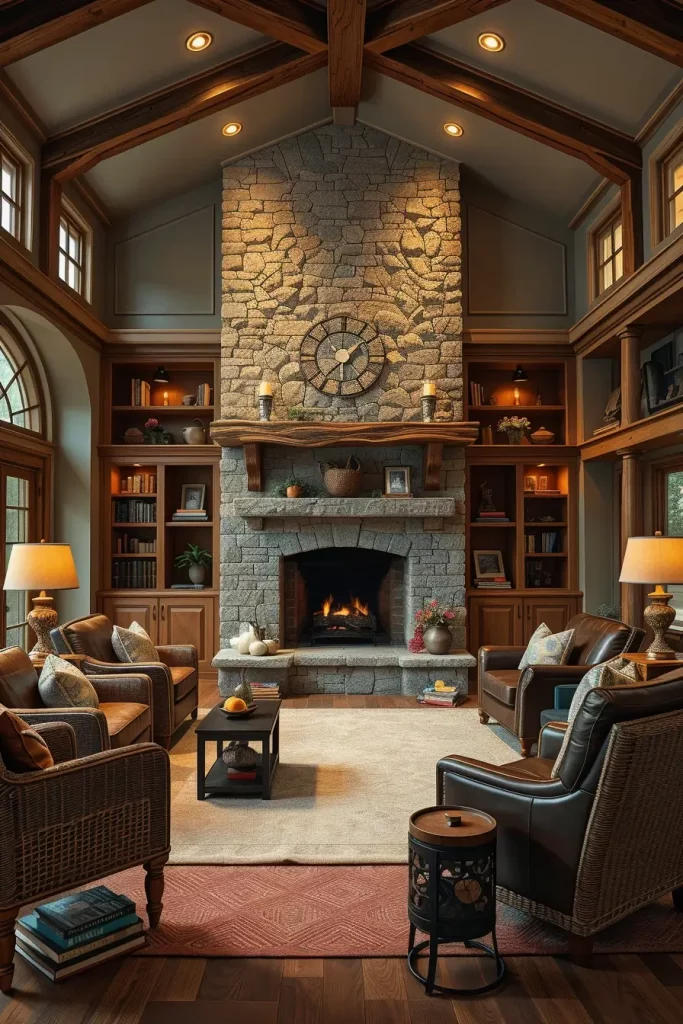
I have a tendency to opt for a stone fire place going from the floor to the ceiling, or a white painted brick face. Add a rustic mantel to the layer and top it off with art, mirrors, or seasonal decorative elements to make it personal. Encase it with in-built shelves or vintage armchairs. In order to ensure symmetry and balance, place the larger pieces of furniture in U-shape or L-shape around the hearth.
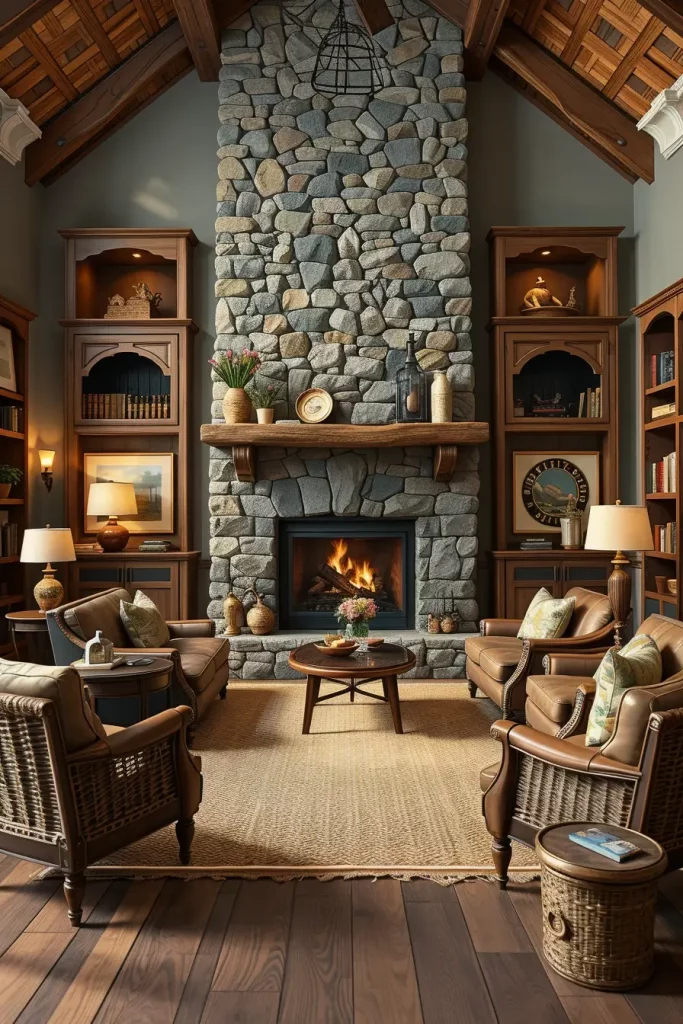
We matched slate fireplace with tan leather chairs and woven textures in one of the recent remodels, and the outcome was as magazine worthy as they get. Fireplaces are functional as well as decorative must-haves that are often pushed by designers such as herself, Joanna Gaines.
One thing that I would suggest in case it’s not there is a hint of greenery, maybe a potted olive tree or ferns to smooth out the rougher aspects of this design.
Layered Lighting For Warmth And Ambiance
Lighting converts a keeping room from ordinary to extra-ordinary. For all my projects, I recommend a layered guide of lighting with ambient, task lighting and accent lighting. This makes the space versatile for various time of the day as well as various purposes – reading, entertaining and so on.
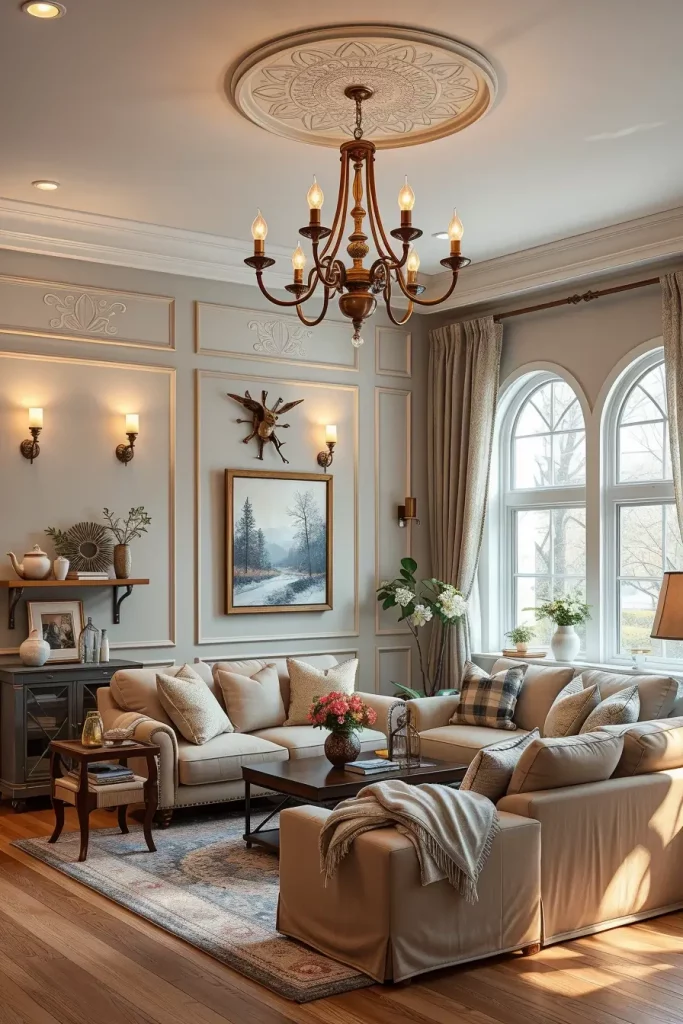
Begin with the statement ceiling fixture: a chandelier or pendant with the dimmer switch is ideal. Then add wall sconces or swing-arm lamps for areas for reading. These include accent lighting, for instance, LED strips that run behind shelves or underneath mantels and that provide subtle highlight to architectural details and textures within your interior design.
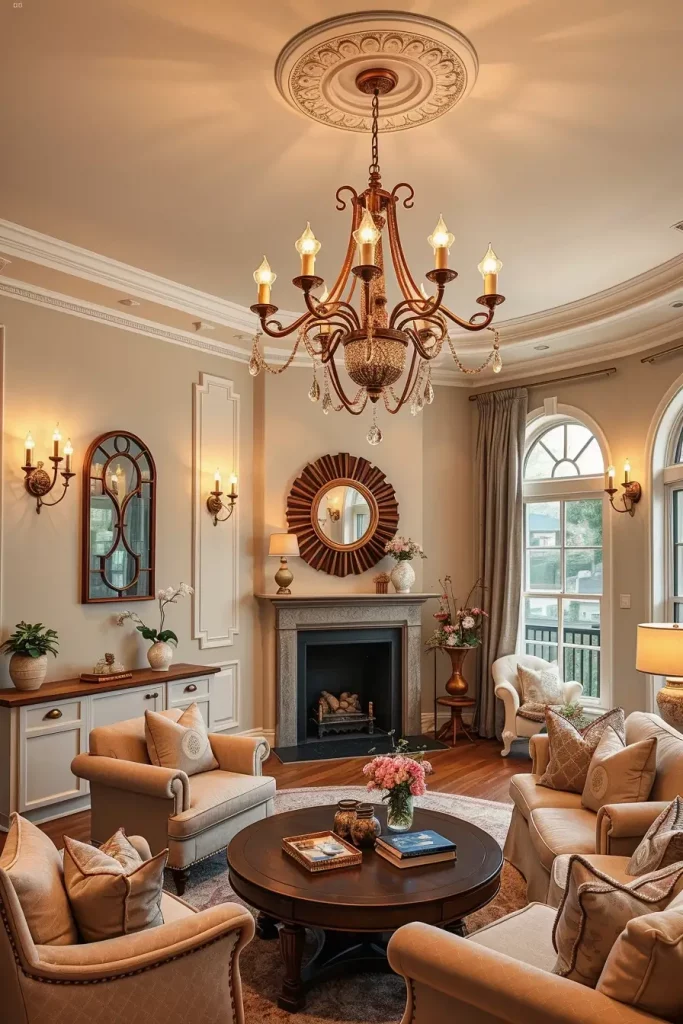
In my own house, I use a dimmable chandelier with cordless lamps on console tables to bring about a warm glare by night. According to the experts at House Beautiful, mixed sources of lighting also make the room come alive and feel warm and cozy.
In order to raise up this concept, I would recommend employing smart lighting systems. These enable you to provide the comfort and brightness, according to the activity or mood – the one that every keeping room deserves.
Comfortable Seating Arrangements With Purpose
One cannot have a keeping room without intentional but comfortable seating. Versatility and togetherness are in my mind when all my designs are in the making. Imagine seating that will foster discussion while still allowing its occupant to relax whilst remaining in touch with what’s going on in the adjoining kitchen.
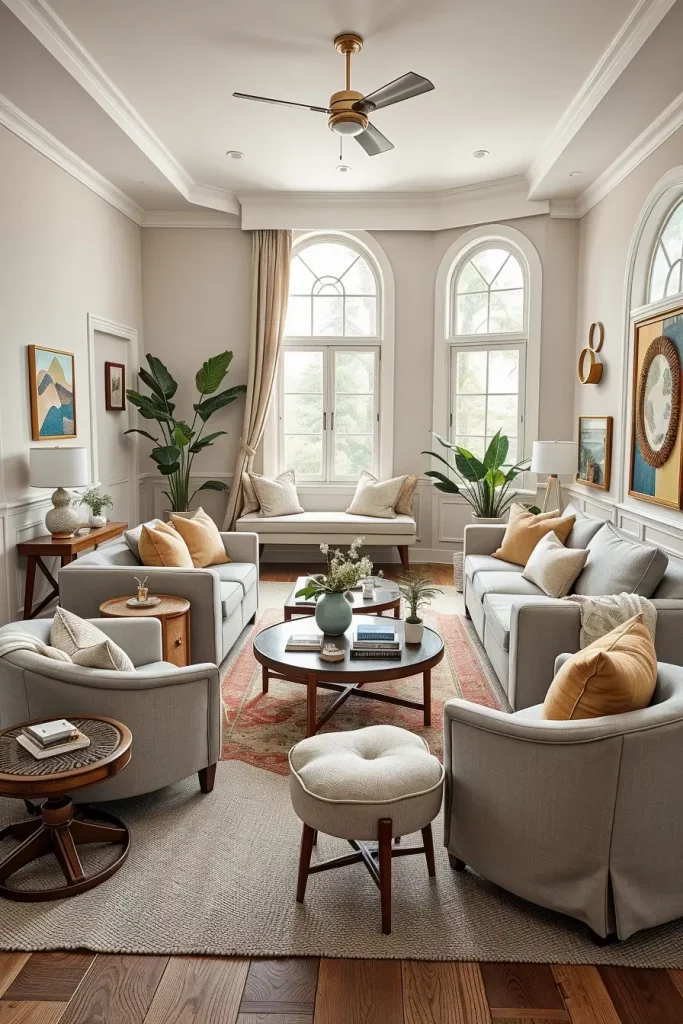
Sectionals are marvels in this case, especially modular-styled that can be rearranged for socialization. I also include a matching set of accent chairs, ideally swivels to be able to face either way. Add a plush ottoman, some tactile throw pillows, and you’re well on your way to a space that blends style with usability.
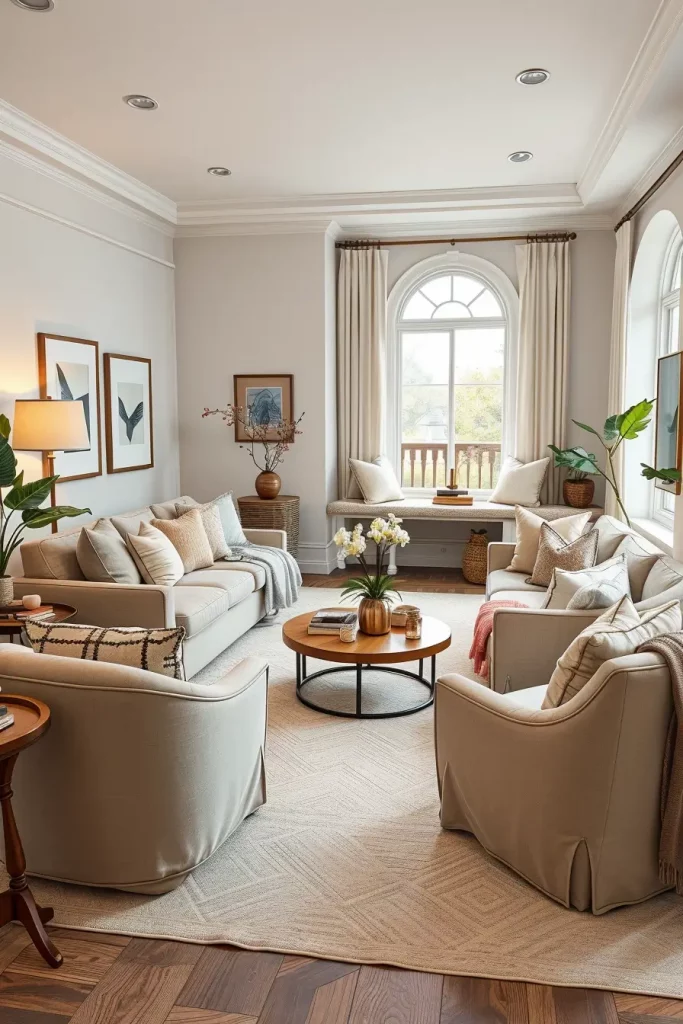
One of the setups that I liked the best was a deep-cushioned linen sofa, boucle accent chairs, and a distressed leather bench. Architectural Digest once claimed that the best chair in the house should be the one which never wants to leave and that is my intention in every layout.
If I were to add one more layer, then I would recommend a narrow bench under a window or even a window seat as it can provide hidden storage for extra cushions and throws.
Rustic Charm With Exposed Beams
For interior enthusiasts who are fond of adding some nostalgia to their interior, exposed ceiling beams aren’t one of them – they are the way. I think they add character and architectural dimension to a keeping room – particularly with other rustic textures and natural materials.
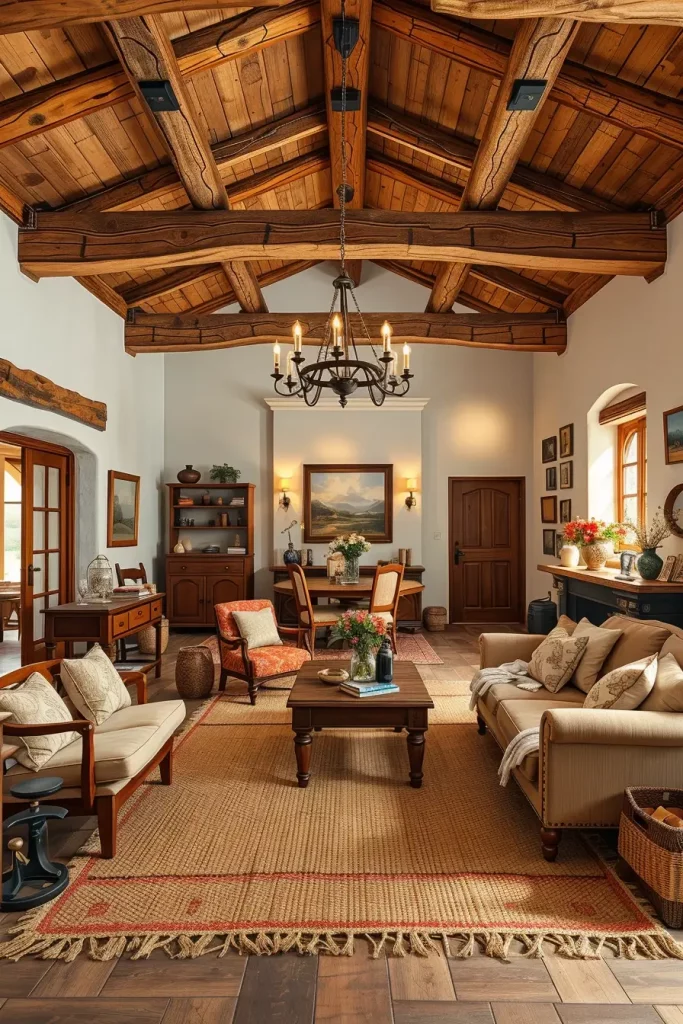
You do not need to get original beams; faux wood beams or reclaimed timber can be ordered online. Match them with white or cream ceilings for contrasting. I typically pair these up with wood furniture, jute rugs, and iron lamps to maintain that earthy, down-to-earth characteristic.
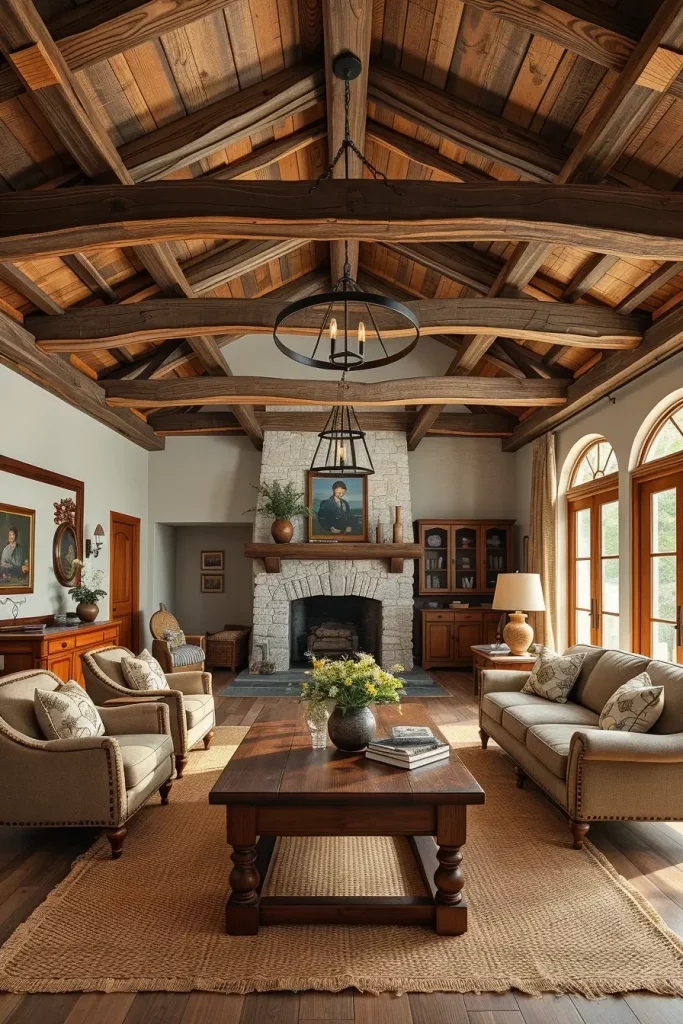
I’ve incorporated beams in a number of remodels and it has always been the feature that the clients talk about the most. They are often praised by Southern Living for what they can bring in terms of charm and visual height to a space.
For the final touch, I’d add warm-hued floor lamps, and cotton/wool themed throws. This softens the sharpness of the strong architectural lines of beams.
Modern Farmhouse Keeping Room Vibes
The modern farmhouse trend is a combination of comfort and clean lines, and it is ideal for a keeping room. I use a soft neutrals, warm wood, and black metal accents base. This combination creates a lived-in but modern vibe for the room without making it too rustic.

Select a linen or slipcover style sofa that is neutral in color and coordinate it with a weathered coffee table and finish the space with a woven rug that is light in color. I prefer to add touches of black iron lighting fixtures, floating wood shelves, and comfy flannel &/or ticking stripe pillows for texture.
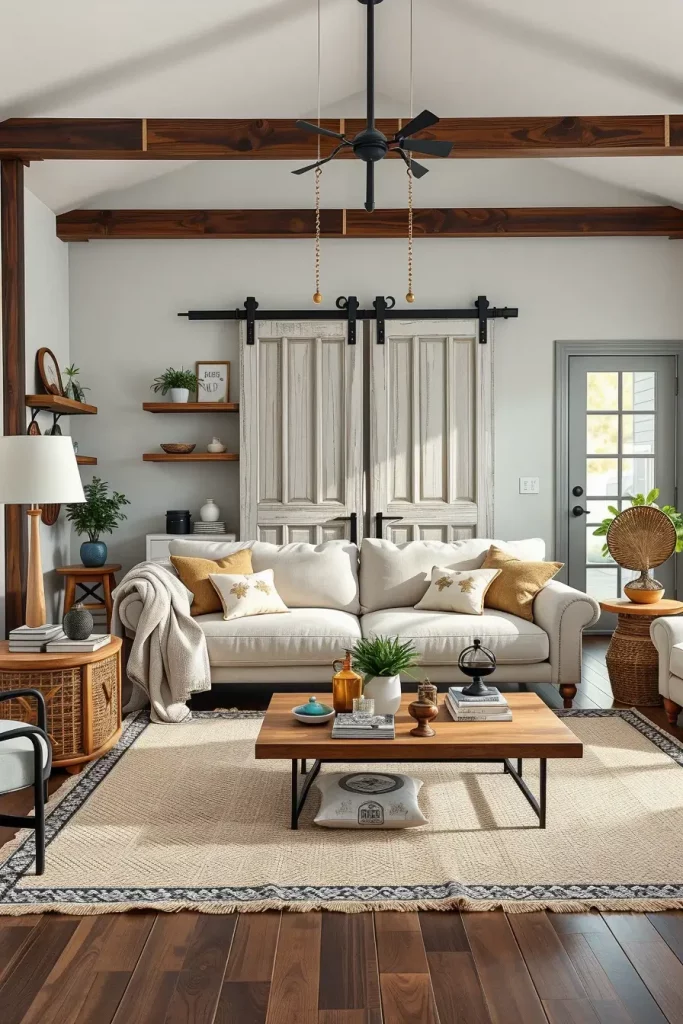
In one farmhouse remodel, we spiced things up with sliding barn doors and industrial sconces, and it made the keeping room a showstopping cozy spot. These combinations of classic and modern are routinely showcased in HGTV Magazine for such family-oriented rooms such as these.
What I would still add would be a little console hutch or cabinet with open shelving to display ceramic pieces or cookbooks — things that will add character and coziness.
Add Texture With Shiplap Walls
Shiplap is one of my favorite elements when I’m thinking about a way of adding subtle character and depth to a keeping room. It only adds the right amount of texture without taking over the space. Walls paneled with shiplap can be painted crisp, clean white or soft neutral and the look is made for a variety of interior design styles — coastal, classic, or modern farmhouse.
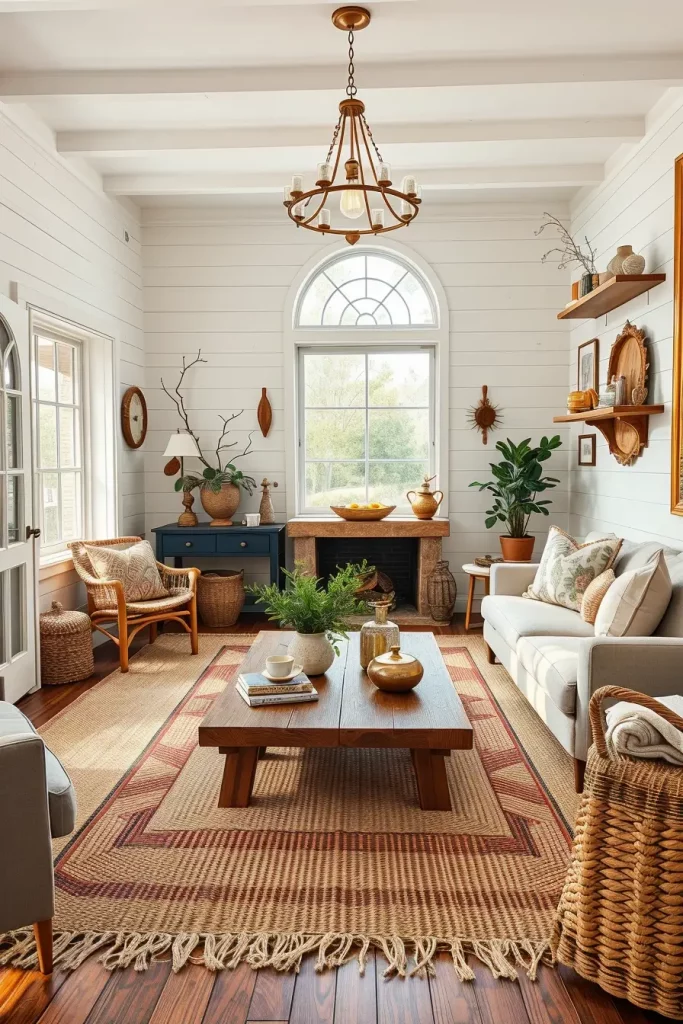
As for furniture and decor, I enjoy combining shiplap with sleek-lined couches, and natural wood coffee tables, a few aged brass or matte black light fixtures don’t hurt that either. Another aspect of texture can be provided by placing a woven rug over hardwood floors. Art in low hues or black and white photography accents the appearance in a manner which does not battle with wall surfaces.
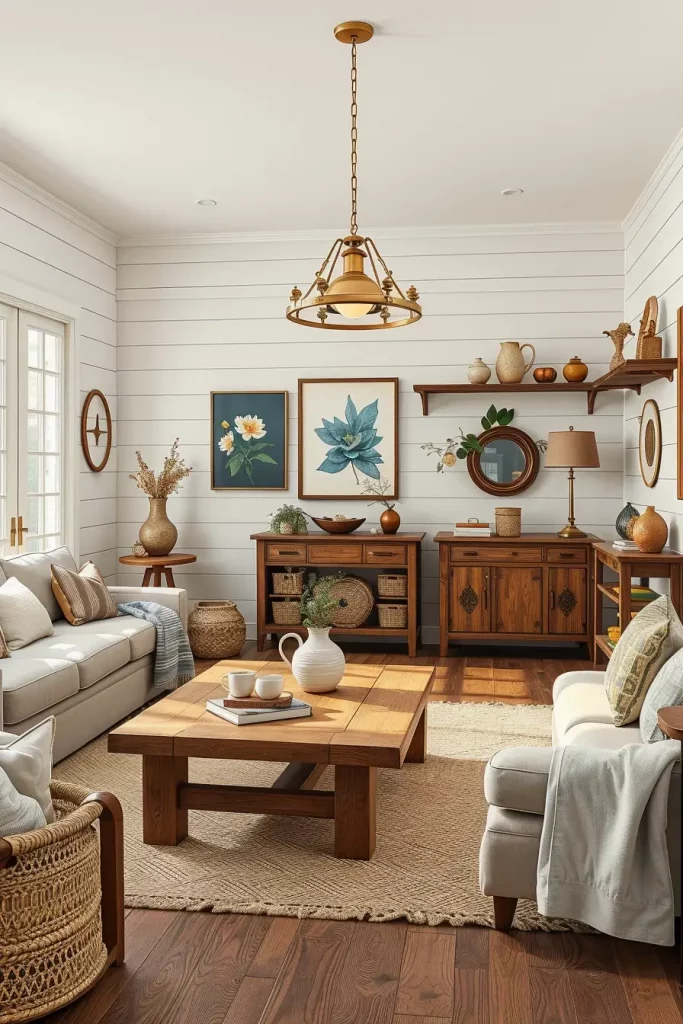
There was once a cottage-type house that I worked on and the whole-keeping room on this house was surrounded by vertical shiplap. The texture made an otherwise simple, neutral space. According to Country Living, this element is suggested in order to add “timeless charm” while avoiding overwhelming small spaces.
In order to add a little more depth to this design, I would add a few floating shelves on one wall, styled out with vintage books, small potted plants, or ceramic pitchers to create a lived in yet clean feel.
Neutral Palettes For A Calming Retreat
The keeping room is supposed to feel like a cozy sanctuary in the home and there is no better relaxing color scheme than a harmonious neutral palette. My experience is that soft taupes, beiges, grays, and creams make a place for the mind to relax as soon as one sees it. These colors are also very versatile and they go well with any kitchen design or open-design schemes.
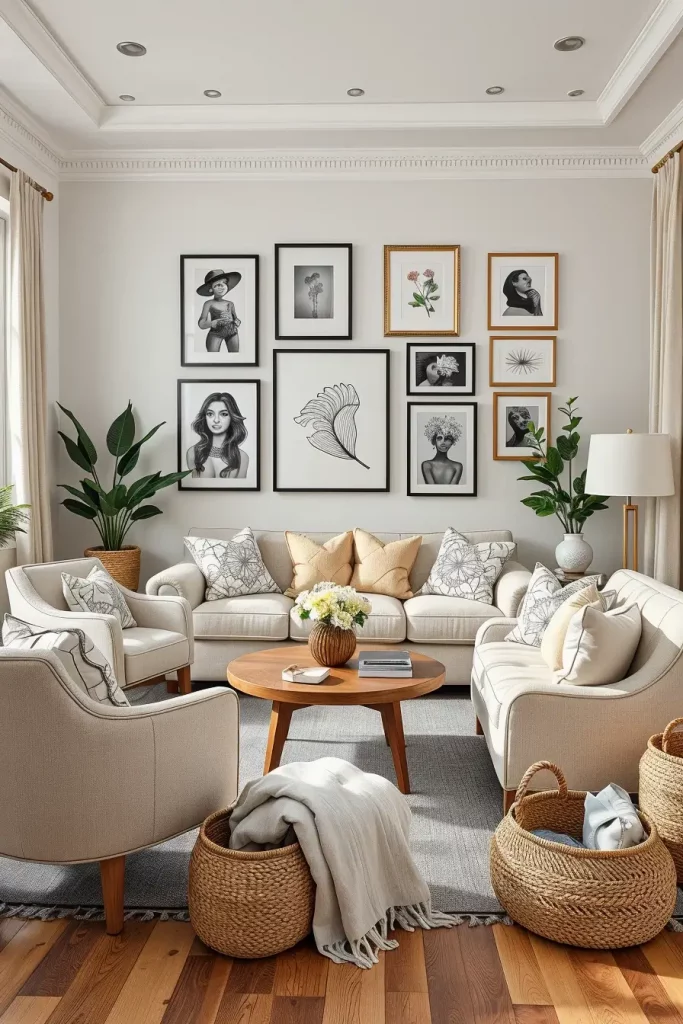
In terms of filling in the area, my thing is the furniture with classic shapes – think oversized satin cushioned armchairs in cream color, very light linen colored sofas, or textured rugs of wool. Lay a chunky knit throw, a few decorative pillows, and add couple of natural attributes such as a rattan basket or a ceramic bowl to the coffee table.
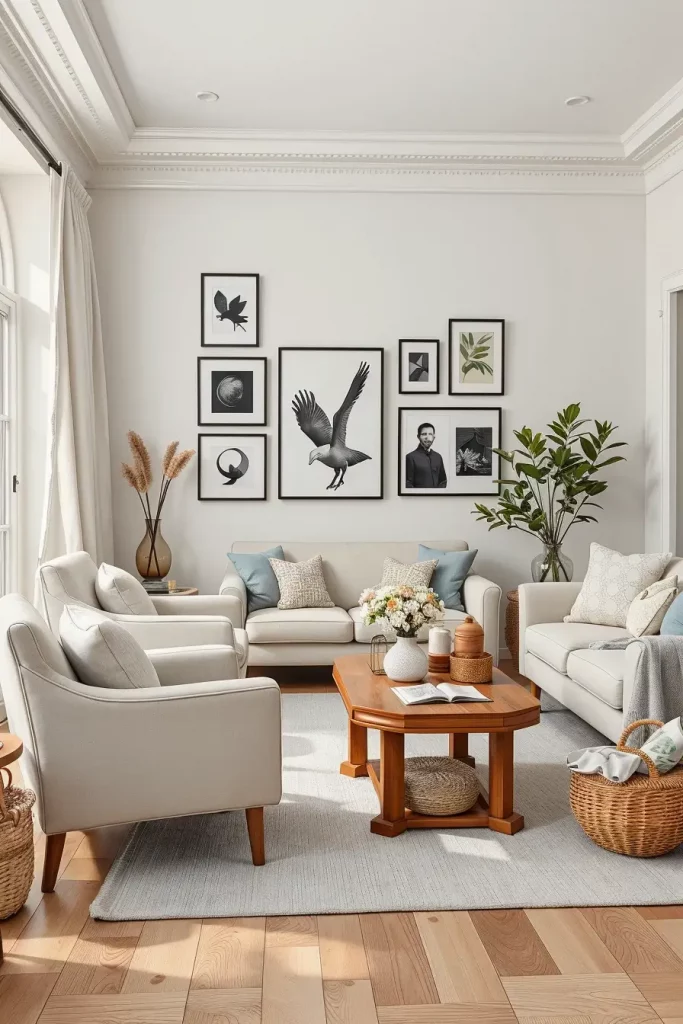
In my personal projects, I simply resort to neutrals whenever I want the client to feel he or she was “at home” as soon as he or she entered a room. Creators such as Shea McGee tend to talk about the timeless attraction and multi-faceted interest neutrals have to offer, particularly in informal living spaces such as keeping rooms.
In case I were to expand on this, I would recommend including gallery wall with white or oak frames as well as minimal black and white art, which will not overwhelm the style but add on the personalized touch.
Soft Furnishings For Everyday Relaxation
When designing a keeping room, I try my best to make it a place in which you want to really sink into and relax. Soft, luxurious furnishings are key. I am always advice layers of tactile comfort which embrace you – this is not for formal stiff sitting.
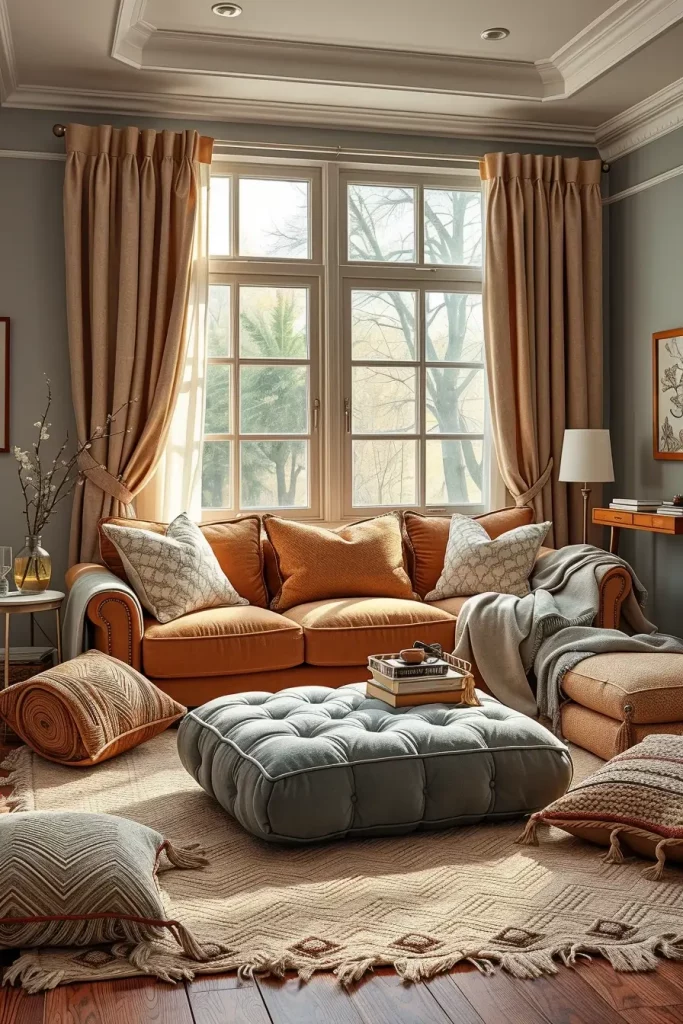
A deep sofa then – one that is ideally feather-filled and covered in a soft fabric such as chenille or performance velvet – should be your first choice. Include cozy throws, big floor cushions, and thick under foot rug such as plushy wool or patterned flatweave. Curtains must be flowy and light filter, to maintain the moods as chilled and atmospheric.
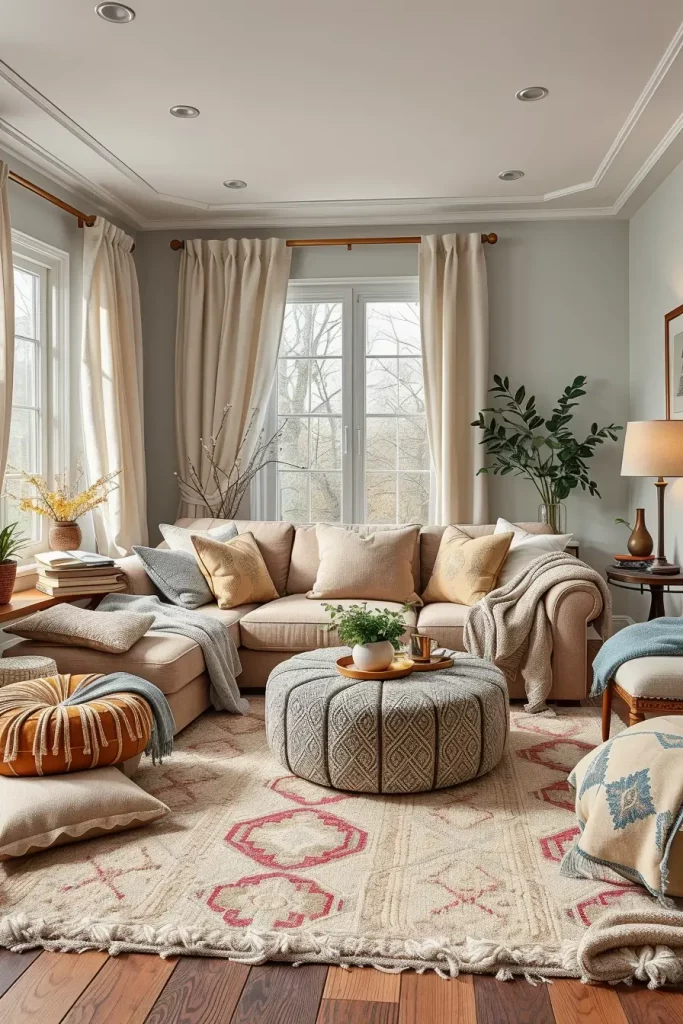
In one of my recent remodels, we utilized a combination of real Belgian linen and suede, and woven baskets in order to soften the corners of the interior design. Domino Magazine recommends creating a layering of textures, not only visually but physically as well, to make “a cocoon of comfort”.
Another option that I could suggest is to use a soft ottoman instead of a coffee table in case the company of young children is present. It is functional, safe, and gives an extra plush surface in the room.
Dual-Purpose Spaces With Style
A modern keeping room not only looks good on the outside, but it has to work hard as well. I always design mine with a factor of multi-functionality at play. It ought to be an area to unwind, take care of work, study, or amuse oneself – but with no compromise on style.
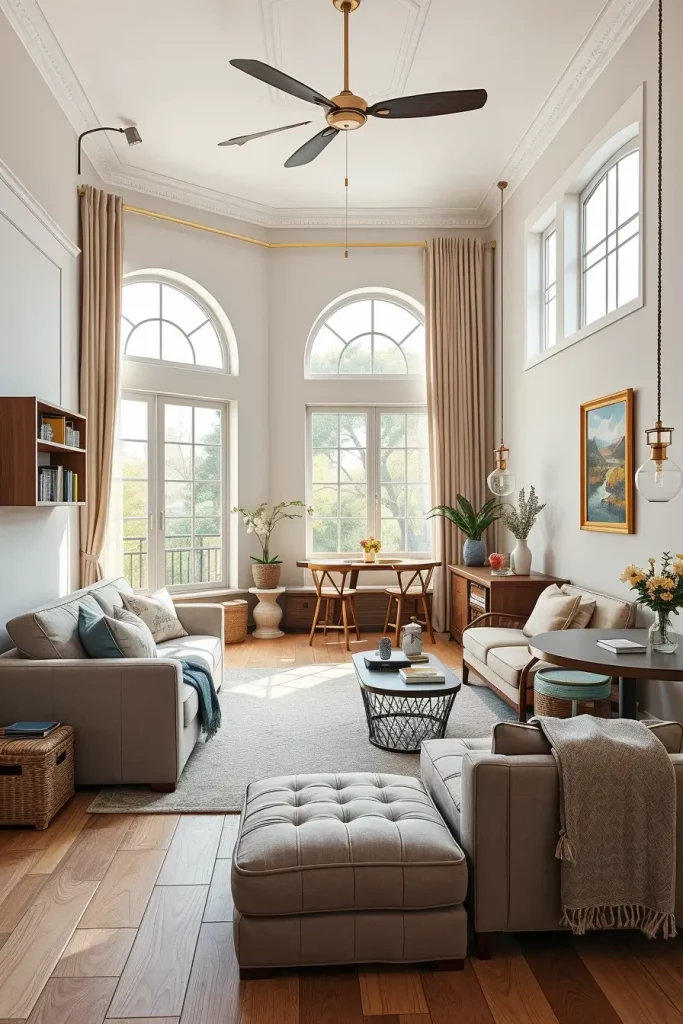
In order to do this I select furniture that is not only good looking but smart as well. For instance, a storage bench that can double up as coffee table, or a modular sofa with convertible pieces. I’ll usually make a reading corner with a small table and a task lamp in a corner. Baskets with lids can be used to conceal toys or books but still adding to the general decor.
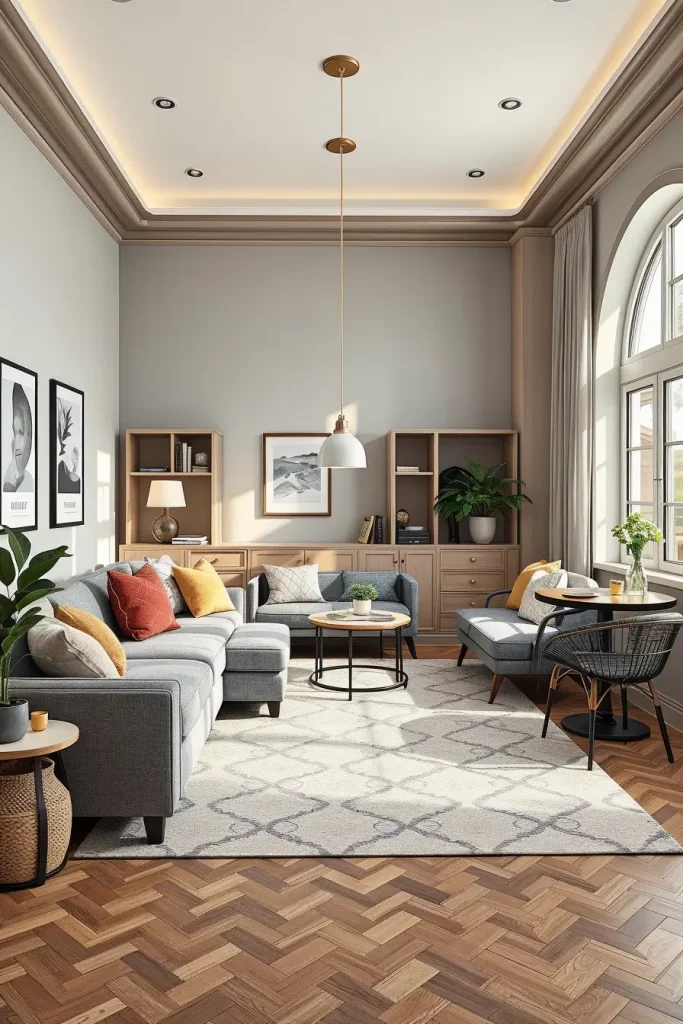
At my own home, our keeping room also is my little girl’s afternoon homework place. A tiny round table and two café chairs provide her with an appropriated area while the rest of us sit around lazily. As Elle Decor identifies, the finest interiors, today, are the interiors that could combine beauty and utility without a problem.
I would also suggest using the wall space for lighting or a slimmer set of shelves for maximizing the vertical space, which should be particularly used in smaller formats.
Stylish Built-Ins For Function And Flair
If there’s one way of integrating smart storage with everlasting beauty in a keeping room, it has to be built ins. I like to do custom cabinetry or shelving on either side of the fireplace or along the far wall, to put books, baskets, decor, and media equipment. If done right, they are both practical and elegant.
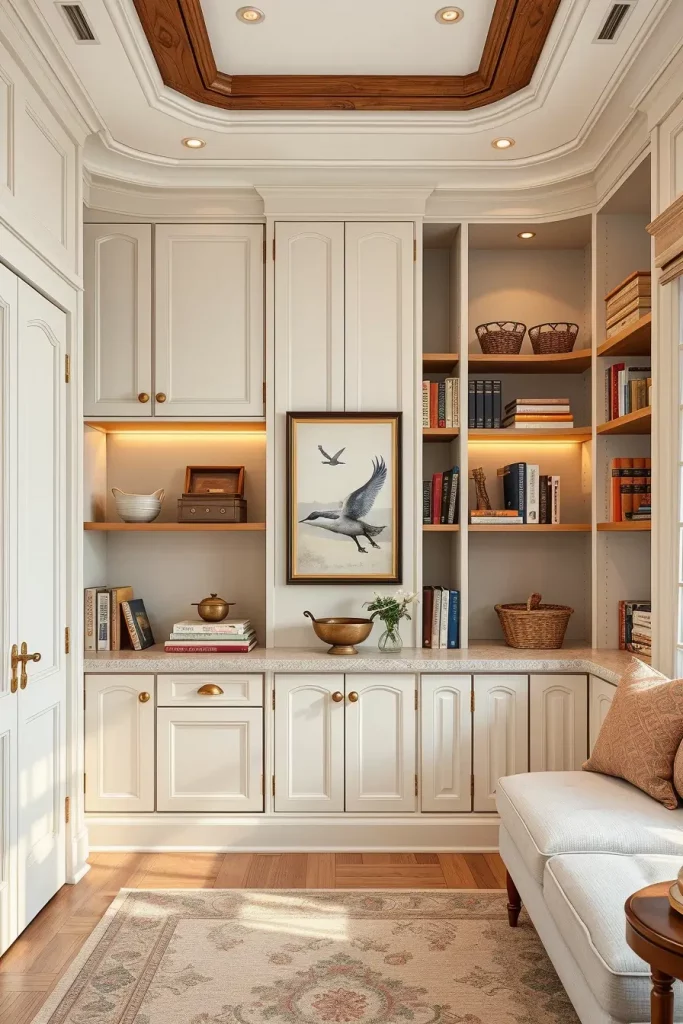
Match the built-ins to wall color for a softer look, or go for drama with a tone or color like navy or charcoal. To add a personal, but still polished, touch, use woven bins, hard back books, and family photos. Combined lighting within the shelves have this beautiful glow which offers them warmth during evening times.
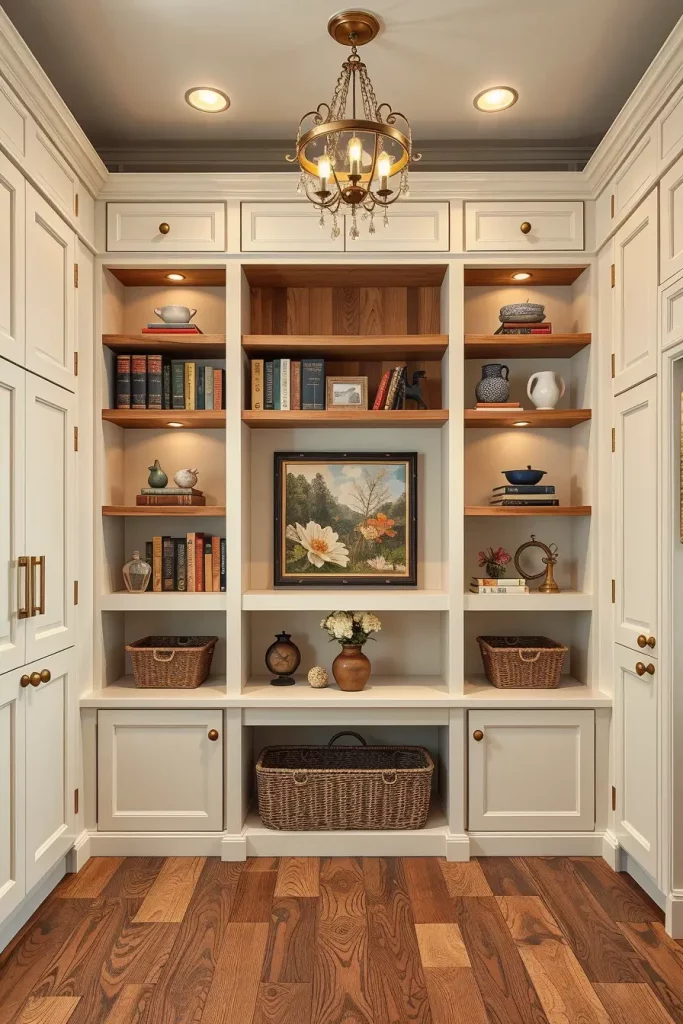
One of the projects I have done was off-white shaker-style built-ins with brass hardware and floating oak shelves. It became the most talk-about feature of the whole room. Mags like Veranda have gone on and on about how the built-ins add “architectural integrity” to everyday living spaces.
In case, I would want to take it a notch higher, I would add the sliding cabinet doors or pull-out drawers in the base to conceal clutter yet without compromising accessibility.
Indoor Plants For A Fresh Atmosphere
One of the best ideas to make sure that a keeping room does not look drab is by bringing the nature indoors. I use indoor plants not only because they purify air but because they fuzz out hard lines and bring natural element into the interior design.
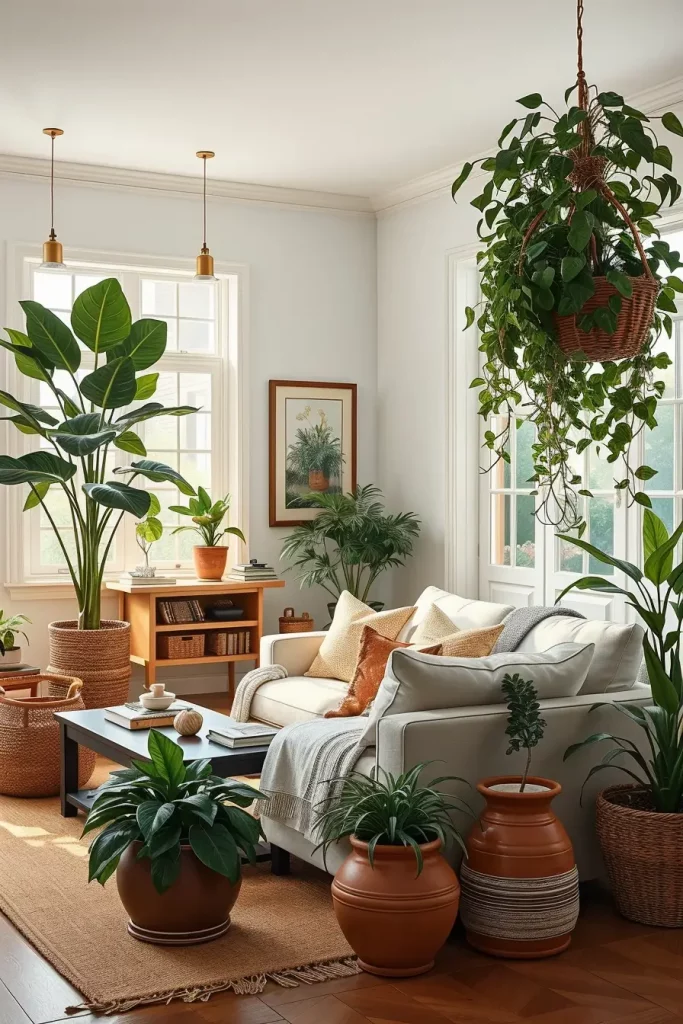
Picking from the available options, I would go for a big fiddle leaf fig in the corner, small succulents or pothos on the shelves, and maybe a monstera in a woven basket near the couch. For an additional textural element, use ceramic, clay, or seagrass planters. One can also use plants as a means of incorporating a particular style such as a modern boho or minimal Scandinavian design.
Some of the best flips I have had is layering of trailing ivy over open shelving and a huge snake plant in a concrete pot-it left the keeping room clean with a little bit of life. It was recently pointed out by Dwell how design, biophilic can improve the mood and creativity.
For small-sized rooms, I would recommend having planters (hanging or on plant stands) around the window to conserve the floor space or use likewise vertical height plant stands.
Natural Light And Airy Curtains
Natural light adds a greater degree of invitingness and spaciousness to any keeping room. I am always trying to increase it – pale window treatments, eliminating heavy valances, or transom windows if it is remodel.
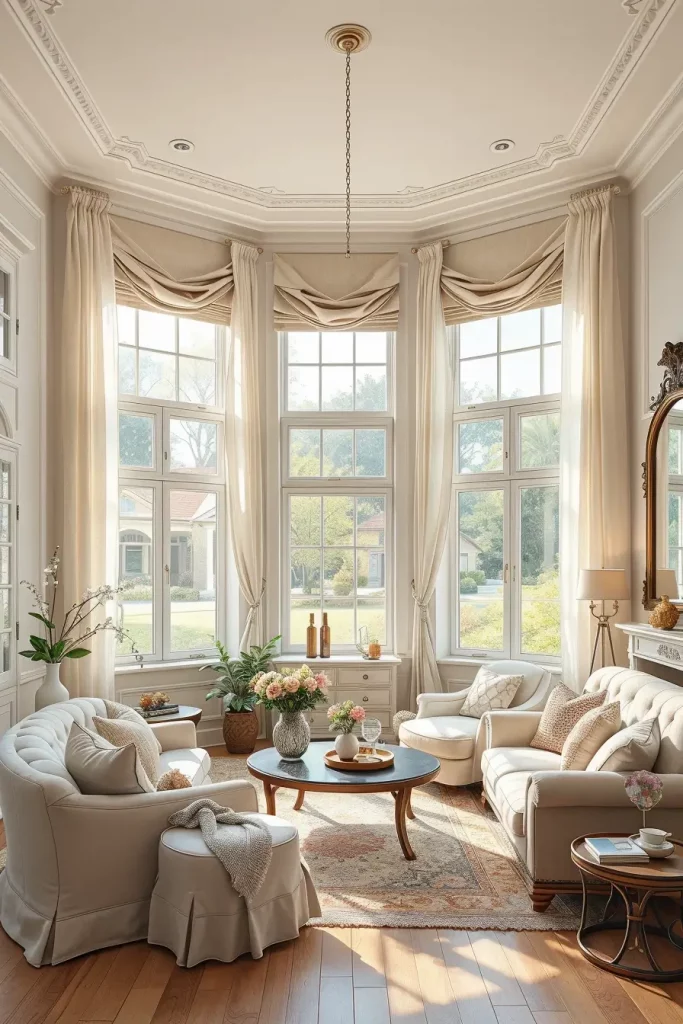
As far as curtains are considered, my preference would be to linen or sheer cotton in whites, creams, or soft taupes. Mount curtain rods greater off and over the window frame to let in additional light into the room and make it appear increased. Layering roman shades with curtains also provides for additional control for light without blocking airflow or view.
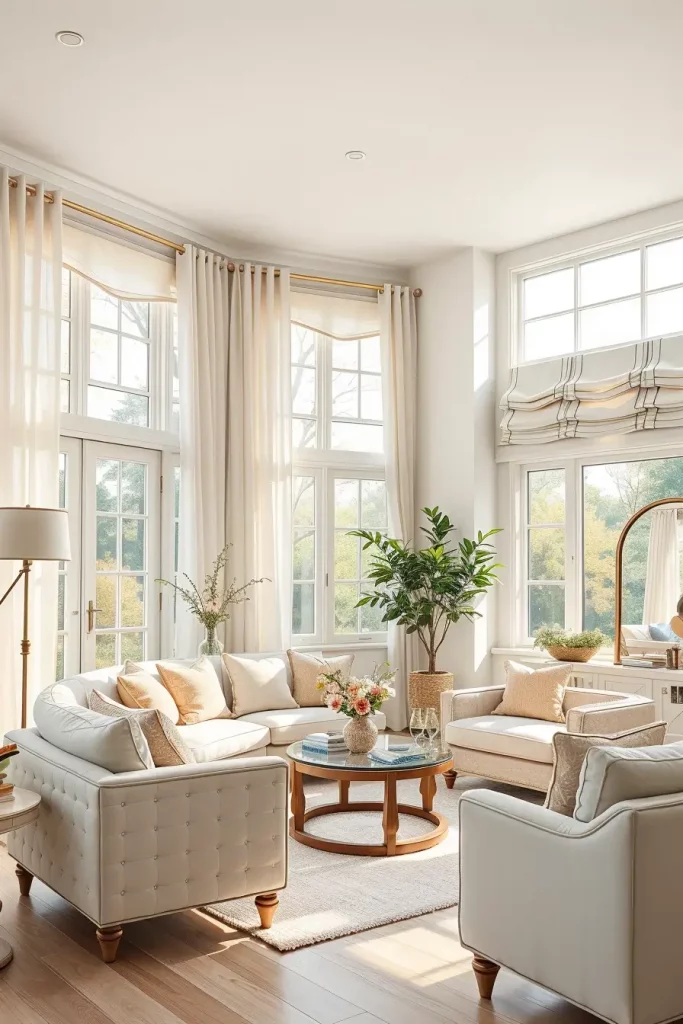
I had done a coastal-inspired keeping room once based on gauzy floor-to-ceiling panels, and it made a closed corner transform into a breezy, elegant refuge. According to the Better Homes & Gardens, layering textures in window dressings is a way to accomplish function as well as beauty.
For houses with limited light, I could install a mirror opposite the windows for reflection of light or apply a paint that can reflect light on the walls to brighten the space more.
Cozy Reading Nooks With Personality
In a lot of keeping room ideas, a reading nook helps to create a personal touch that cannot be found in regular seating. Being a frequent recommendation, I introduce this concept to homeowners who enjoy relaxing reading but at the same time do not want to miss anything in their homes. A reading nook creates an isolated space, creating a balance between isolation and sociability, within a shared space.
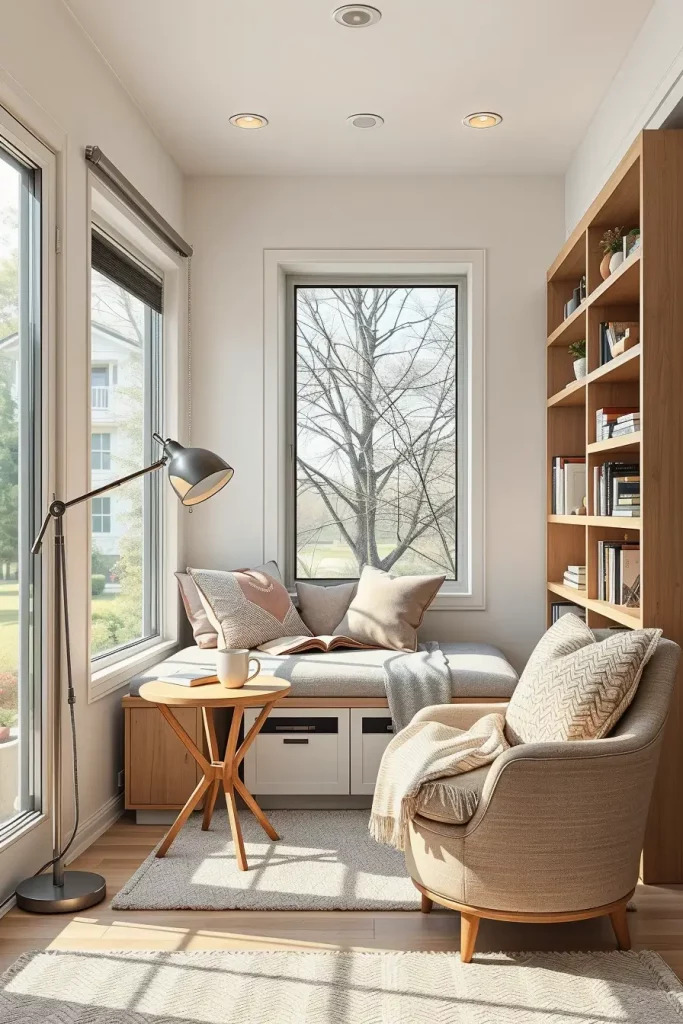
I prefer to begin with a window seat that is part of the built-in or a cozy plush armchair in the corner drenched with natural light. A wall mounted sconce or arched floor lamp supplies specific illumination. Go for a low round side table for mugs and magazines, along with a small bookcase or built in shelving with vintage looking storage bins. Add throws, textured cushions, and framed art prints for the charm.
From experience, the clients are happy with the fact that reading nooks can depict their personal style. Actually, the Elle Decor recommends the use of nooks in multipurpose rooms in order to enhance relaxation and functionality. I totally agree – it is a fantastic way of introducing a human scale into a room that would otherwise be too airy or cold.
To raise this idea, try to have under-seat storage or a gallery wall with books that represent your reading interest. The delicate layers give purposeful yet inviting feel to the design.
Incorporating Vintage Accents Creatively
One of my favorite practices of adding character to a keeping room is the introduction of vintage elements to give the room character without making it look full. I like mixing vintage accents to back contemporary layouts, adding some warm in-lived-inness to make a home specifically personal. This looks particularly good when the keeping room is next to a modern kitchen or a trendy living area.
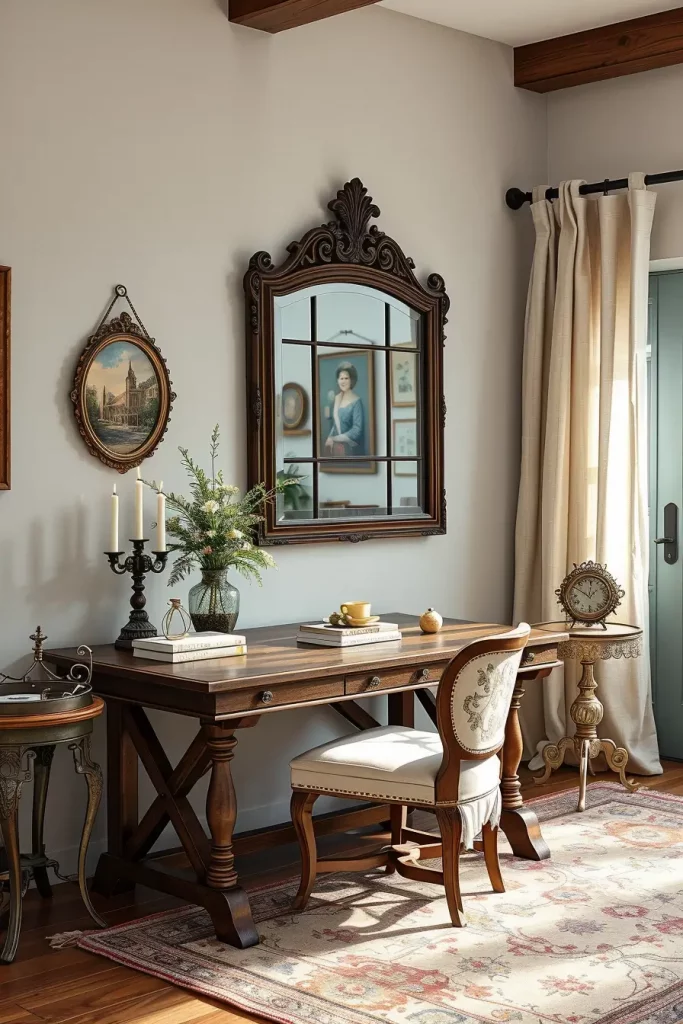
I recommend salvaged wood knickknacks such as a little antique writing desk, an old weathered mirror, or a distressed pair of side tables. Include iron or brass hardware, patterned rugs, and pieces full of heirloom appeal, such as old clocks, botanical prints, or ceramic vases. Repurposed wooden crates for storage can even appear authentic if they are done the right way.

On my part, a combination of old and new creates coziness and familiarity. Following the Better Homes & Gardens advice, avert from holding back on layering decades of style but just ensure that the palette is kept consistent. It is all about restraint and editing. Some extraordinary piece can turn the whole room into a singing vicinity.
You may also wish to do some tactile contrasts such as velvet or linen as opposed to those older wood grains to achieve a more dynamic look. Soul can be added to the room to great lengths with just a little bit of juxtaposition.
Smart Storage Solutions That Disappear
I am constantly faced with families that want their keeping room to be relaxed and clutter-free whilst it is extremely functional. For my case, my favorite solution would be hidden storage. These brilliant strategies help us maintain the open airy vibes, while hiding daily essentials from the view, but keeping them at an arm’s reach.
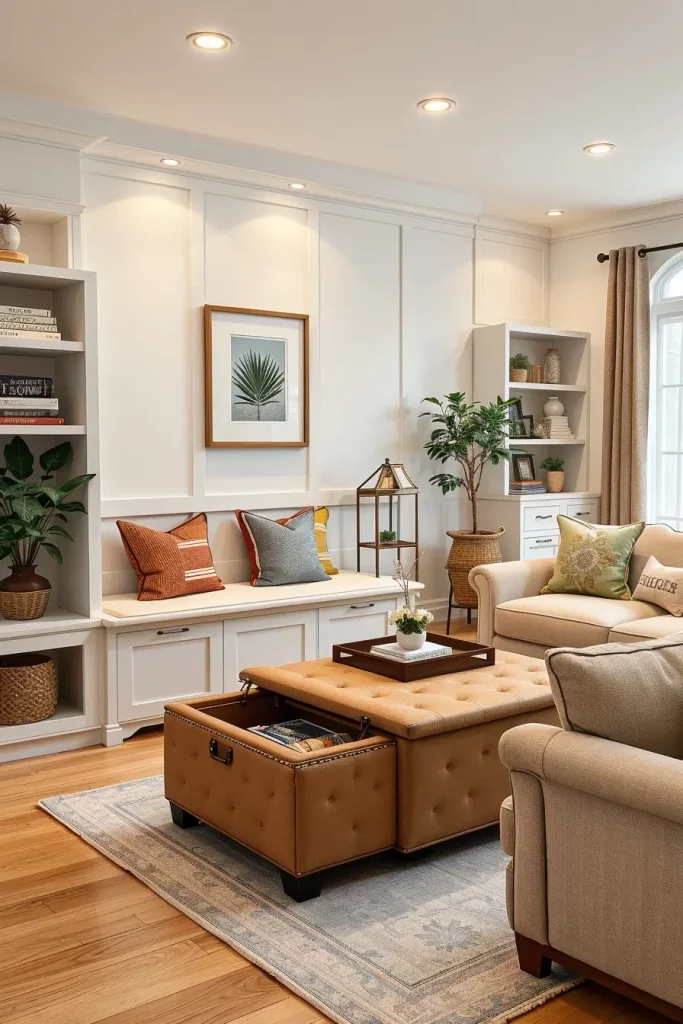
Wall-mounted benches with lift-top lid, ottomans with secret storage compartments and sleek media cabinets with false drawers designed into them make good furnishings. I am in love with floating shelves that can be harmonized with wall paint or even tall cabinetry hidden in alcoves using sliding doors. Baskets that can fit under furniture can be trendy and practical when it comes to everyday items.

Several times in my practice, I advise a concealed storage to frenzied families with kids. As Apartment Therapy says: “A little concealment creates a lot of calm”. Such an approach guarantees maintaining the coziness of the room and meeting real-life requirements.
For greater versatility, look at modular storage that can be reconfigured or stowed away for the seasons. Keep in mind custom pieces that serve double purpose, for instance, storage wall as a media center or a bookshelf.
Family-Centric Layouts That Invite Gathering
At the core of a well formed idea of keeping room lies the value of family – a cozy, welcoming space to which everyone comes in for relaxing and gathering to spend everyday life moments together. I always suggest layouts that can be used for multiple purposes like conversation, games or lounge.
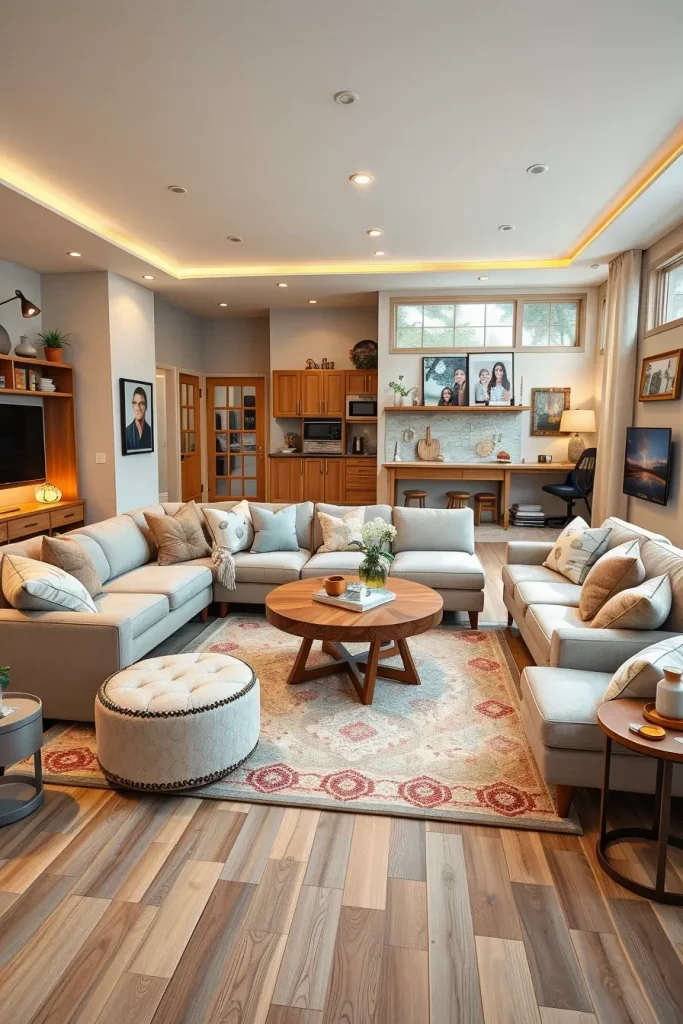
Stock yourself in a suite fit for a king, with a large sectional or U-shaped sofa to establish a basis for the room. Soft Ottoman, casual side chairs, and a central coffee table that can withstand the snack or board games. Install layered rugs to add the definition of zones within the space but still creating openness. Ensure that there is a clear flow between the kitchen and the keeping room, meaning that there is natural movement.
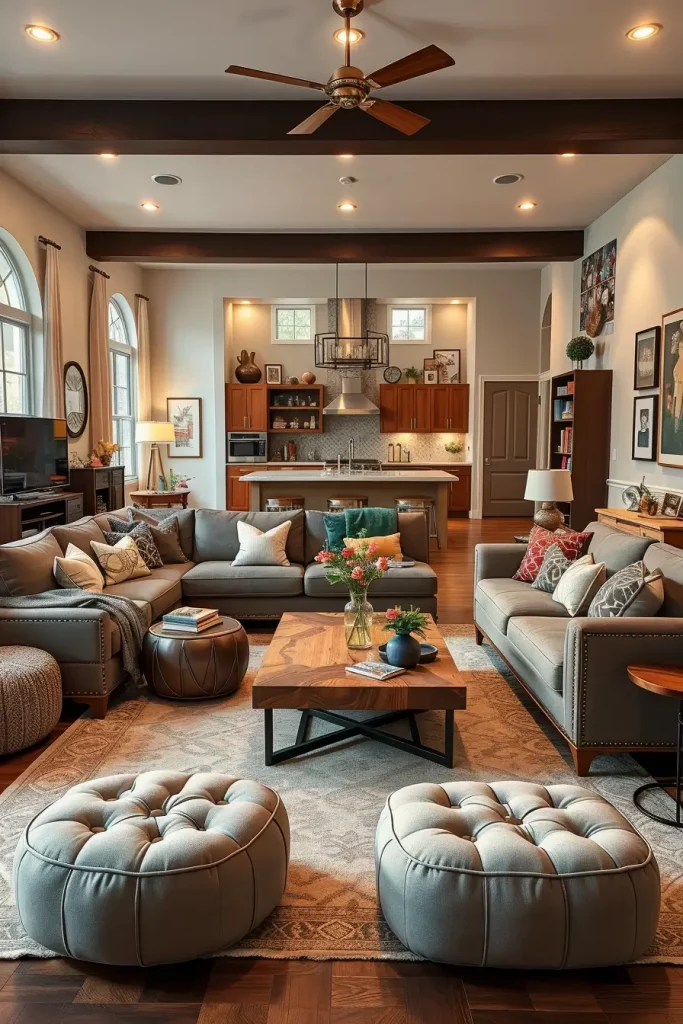
By my clients’ love, I mean that they want elements of rooms to appear effortless but finished. By looking at the House Beautiful, they note that people congregate at the places where comfort and visual clarity converge. Every inch counts it is used: craft corner, game shelf, or lounge area.
A family layout can be made better with personal accessories such as a family photo wall, chalkboard message center, or even appropriate furniture for the kids that doesn’t come at the cost of aesthetics.
Keeping Rooms With Elegant Touches
Elegance does not imply formality; it should be precise coordination of details that will transform the space. In my designs, I strive for tidy keeping rooms which are still comfortable. Such spaces show taste and polish with little in the way of sacrificing comfort.
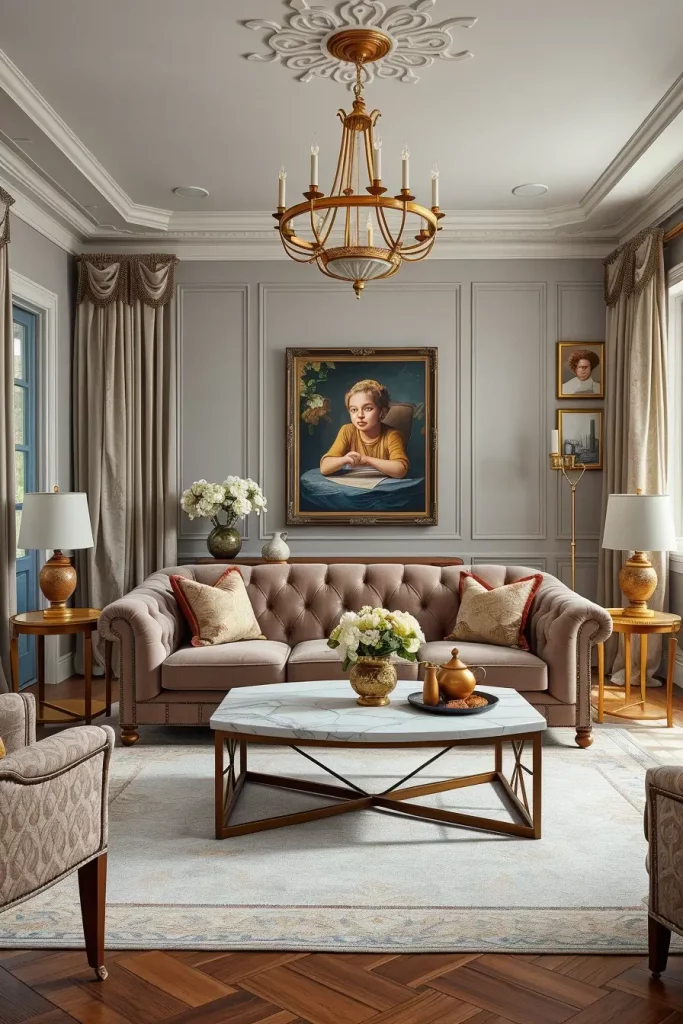
Imagine tufted sofas in linen or velvet, curved armchairs and a marble top coffee table. I prefer to use the glass or metallic accents in the side tables, curtain rods, decorative trays among others. The drapes in neutral shades edged in embroidery, statement lighting such as chandeliers or sculptural pendant lights, and sleek-frame art are ways to subtly enhance the room.
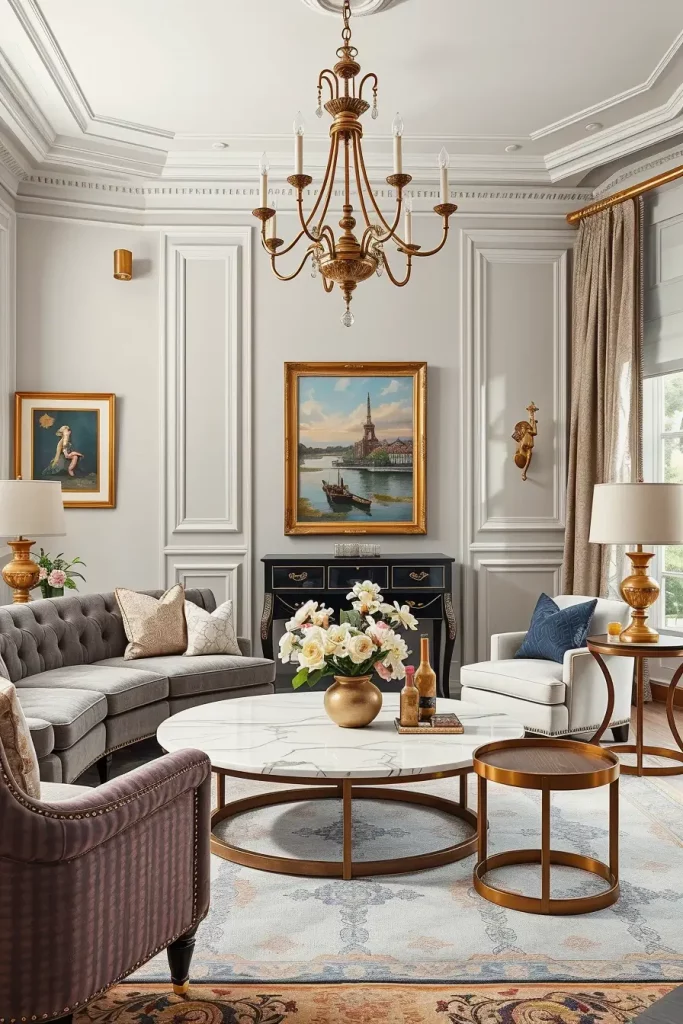
All in all, in my professional life, I think that an elegant detail should never cover function. Balance of detail and scale is often stressed by the Veranda magazine, and I agree. Excessive mirror or lavishing decorative lighting can be a focal point without taking over the layout.
Don’t neglect such little things as silk pillow covers, the brass candleholders, or a throw of cashmere or mohair. It’s the little luxuries that convert a humble room to a place of sophistication.
Mix And Match Materials For Depth
Coming as one of the least given ideas of keeping room, playing with different materials helps to bring depth and nuances into the room. I enjoy ideas of mixing wood, metal, stone, glass, and all sorts of textile to get a sense of a room that comes alive.
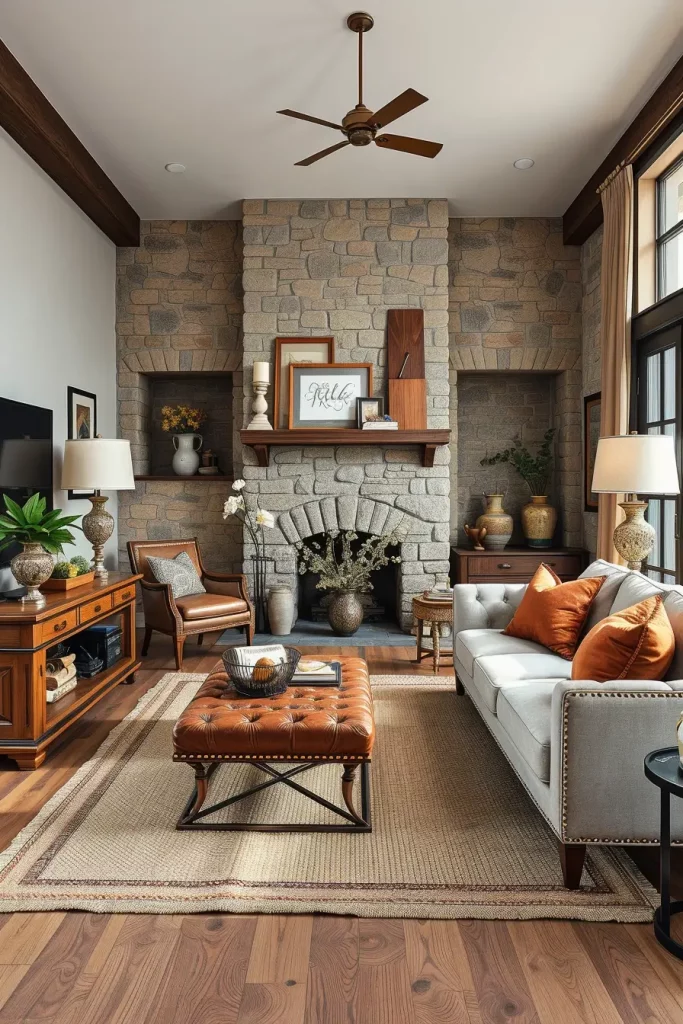
A reclaimed wood console table goes well with a stylish metal lamp and a leather ottoman. A jute rug under a velvet sofa adds a contrast in terms of both sight and touch. Open shelving and wood and glass shelving, coupled with decor in ceramic and hammered brass, provides variety without visual noise.
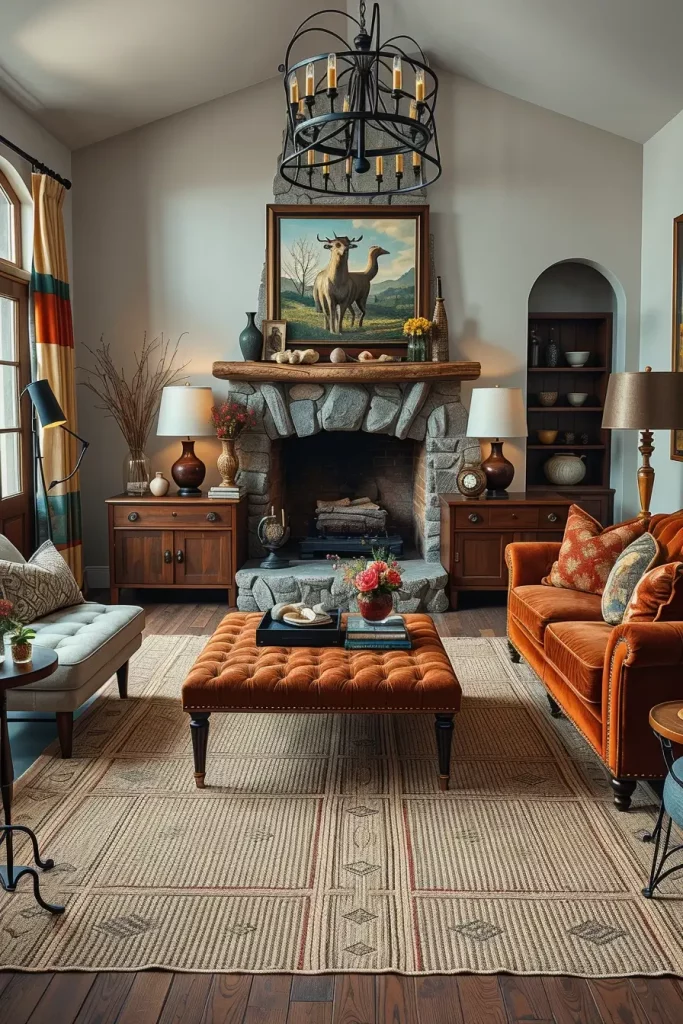
However, when designing such rooms, I tend to begin with one point of contrast, i.e., one anchor material, such as warm oak floors or a slate-colored fire place and develop the design around it. Domino magazine advises layering textures to develop, “visual momentum” and I absolutely agree with that. It is a matter of balancing contrast with cohesion.
Attempt the use of one unexpected substance – the lucite or concrete – for the sake of the surprise. It makes the room feel new and prevents it from looking over “matched”.
Wallpaper Accents For Visual Interest
Wallpaper is a fantastic way to add drama and character to a keeping room and on numerous occasions I have used it to derive attention to alcoves, create a show wall or tie open plans together. If it is used strategically, it gives depth and storytelling to the space.
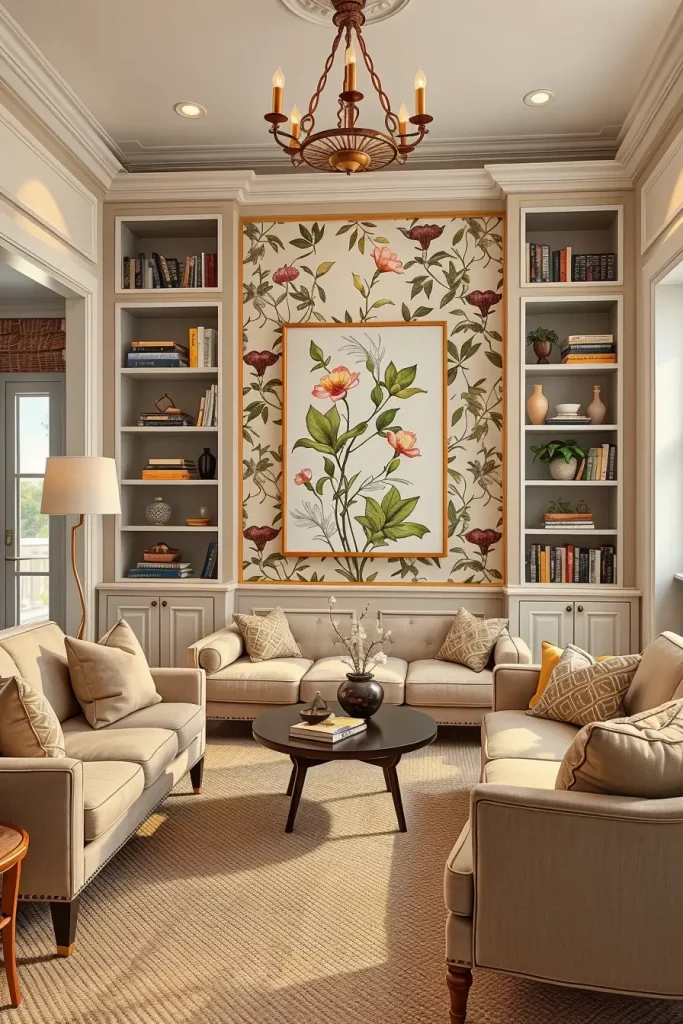
Take a look at a botanical print in one accent wall, a soft geometric for built-in bookshelves or texture wallpaper with grasscloth or linen weaves. I prefer combining the wallpaper with neutral furniture in order not to overload a room with these accents. Festoon it with understated re-echoes in throw cushions or paintings.
Within my projects, wallpaper creates the delineation of space in open-concept homes. In Architectural Digest, it is pointed out how wallpaper can be a “wall-filling art”, and I treat it precisely in that way, particularly in rooms which are not overly detailed with architecture.
Wallpaper looks gorgeous combined with millwork or the wainscoting, and you can paint them in matching colors. This layering brings richness to the architecture and secures timeless background for the future updates.
Earthy Color Schemes That Ground The Room
In cases of clients that want a calm and warm space, I mostly advise clients to opt for earth color tones for their keeping room. These colors – like clay, sand, olive, and so forth – bring a down to earth, organic feel that immediately makes people relax. In transitions places such as keeping rooms, this palette adds on to serenity and stylishness.
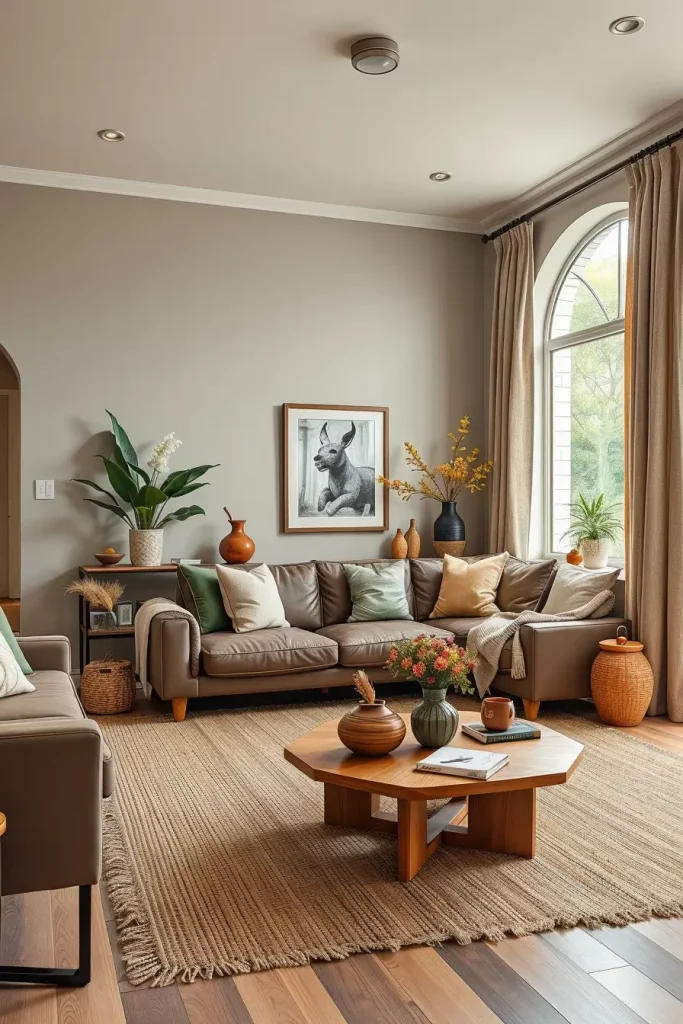
I would rather add various earthy tone layers all over the room. Walls are done in a soft greige, or mushroom tone to provide the base. Then I introduce a mix of caramel-toned leather seating, moss green accent pillows, and natural-woven baskets for texture. Stoneware vases and rustic wood trays are some of the accessories that continue the theme. Light-filtering linen curtains and a jute or a wool rug unite it all.
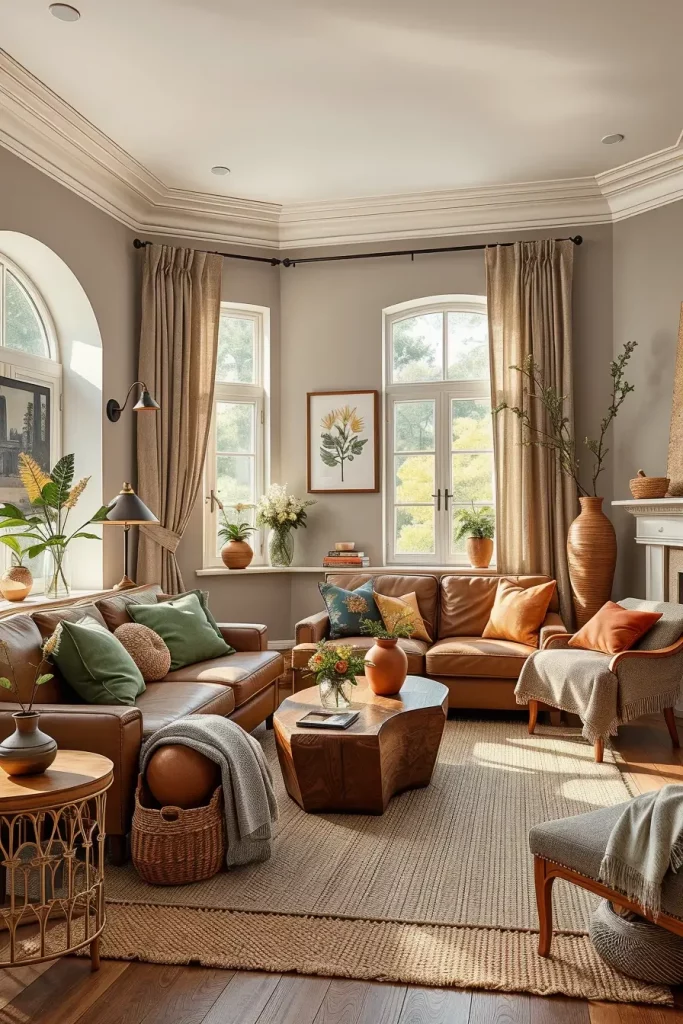
Individually, I perceive that earthy palettes grow up gracefully and lack trendiness, which is essential for a long-term design. Real Simple often advises applying these tones because they have a timeless, restorative touch to them – and I couldn’t agree more. They can be particularly helpful when it comes to keeping the rooms that are used for family relaxation.
To get more depth, use just 1 bold earthy shade – rust or deep forest green – as an accent using a statement chair, large art work or even a throw blanket. It gives richness without overpowering the space.
Timeless Furniture With Transitional Appeal
Furniture with a transitional design, pieces that are able to combine classics with something contemporary, are often the best ideas for a keeping room. From my experience, this is a wise investment as it will be able to make your room change with time and not look old and inconsistent.
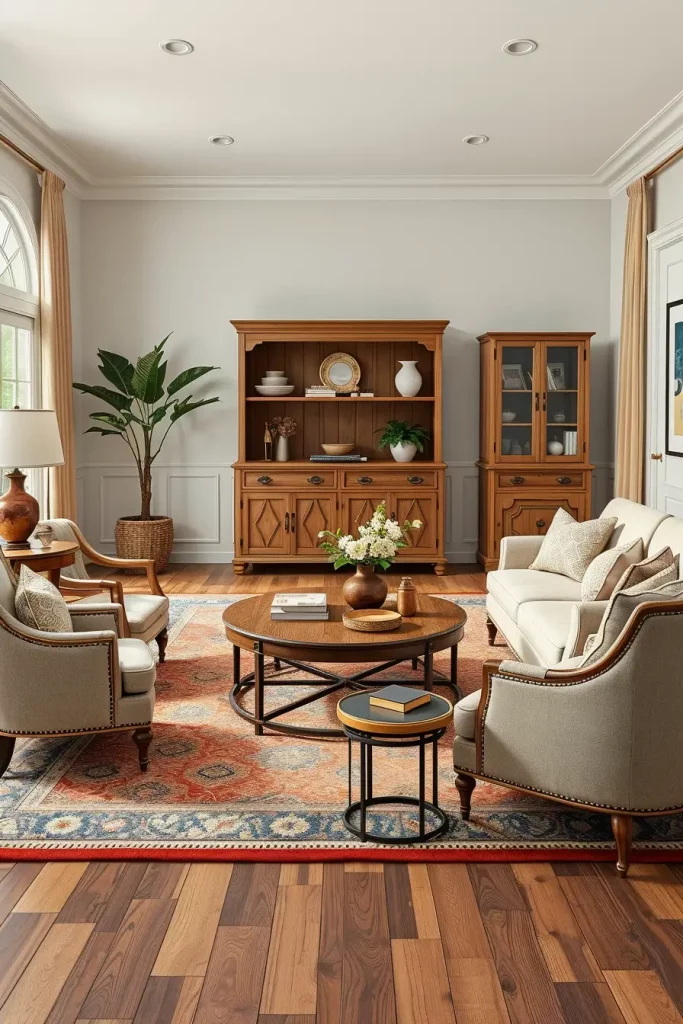
I tend to prefer a plain-colored fitted sofa with a strict design though with soft cushions. A set of upholstered armchairs with delicate curves pay a tribute to classic interior. For table settings, I prefer a variety of wood and metal finishes such as a coffee table made out of walnut and legs of iron. Bookcases or cabinets, including the shaker-style ones, also serve as classic details while sustaining clean look.
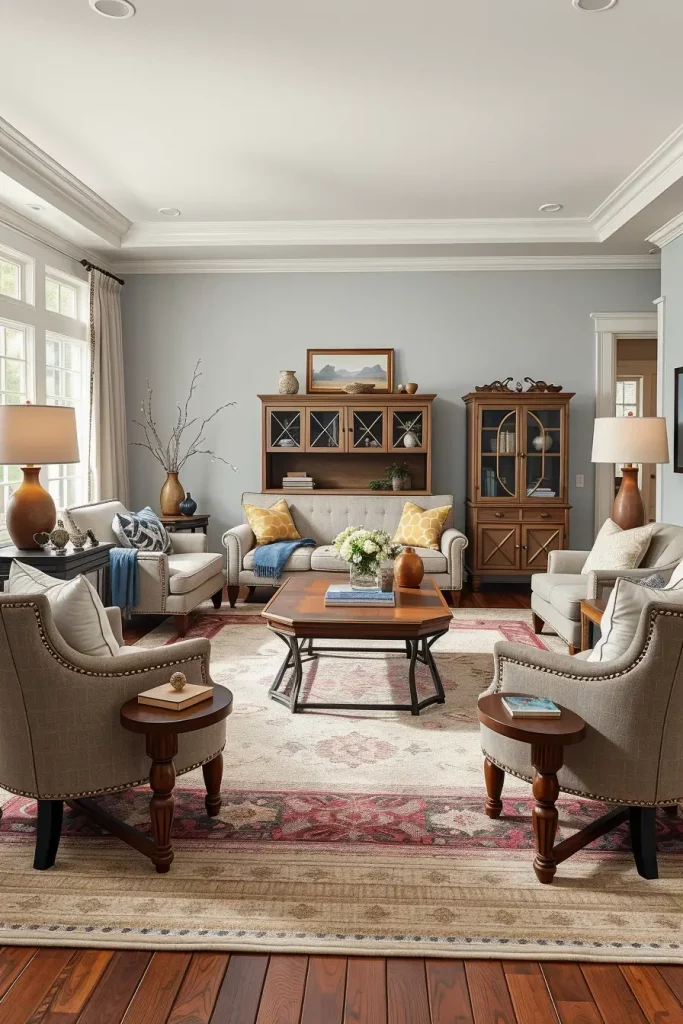
I have always liked the fact that transitional pieces are quite versatile. As HGTV puts it, this style is “feels current without being trendy”. It’s a sensible choice if you’re designing a space you’ll be functioning in every day and would like to love for a long time. Moreover, such pieces combine willingly with other styles, which deserves attention if your keeping room leads out to a kitchen or dining space.
One thing I recommend adding? One accent piece that’s bold or sculptural, such as one-of-a-kind side table or statement lighting. It keeps the space from feeling too “safe” and adds a layer of interest.
Incorporating Antiques In Modern Layouts
Integrating antiques in a modern space is one of the best design moves that I have practiced in staying rooms. This combination adds depth and history and makes the atmosphere unique. The formula is reducing the scale, adding texture, and replacing it with the antique in a manner that it seems like it is intentional rather than out of place.
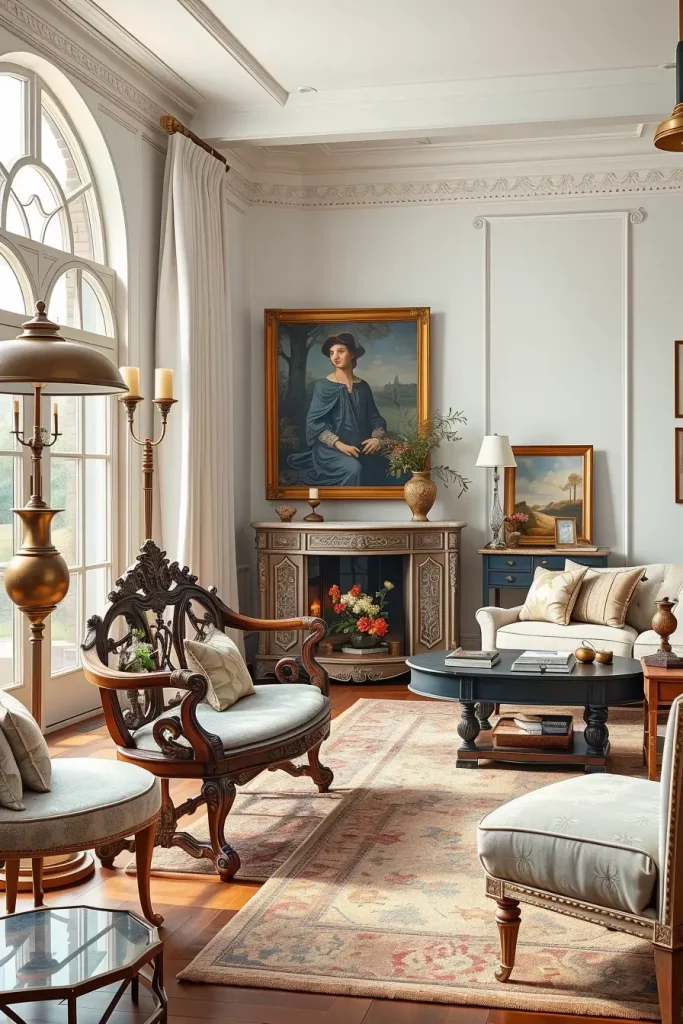
A high antique armoire for board game storage, a carved wood bench for more seating, or an aged brass floor standing lamp can turn into lovely pieces of conversation. The remaining space is typically kept modern, neutral walls, low-profile seating and modern fabrics, so that the antique pieces will stand out without overpowering the space.
I remember one client that used to have a 19th-century sideboard she inherited. We placed it under a gallery wall and complemented it with contemporary chairs – it transformed the whole room. Southern Living greatly stresses on the soul antiques add to otherwise polished areas and I find the information pretty accurate.
Another thing is that you should consider the addition of small pieces of antique décor – frames, trays, lanterns – before going for bigger things. It is a friendly way to try out what’s right for your layout.
Small-Space Keeping Rooms That Wow
Just because you’re working with a small space, though, doesn’t mean that you can’t have style and function when designing a keeping room. I’ve been involved with compact layouts & still spacious, through advanced furniture placement, light enhancing materials and multi functional design.
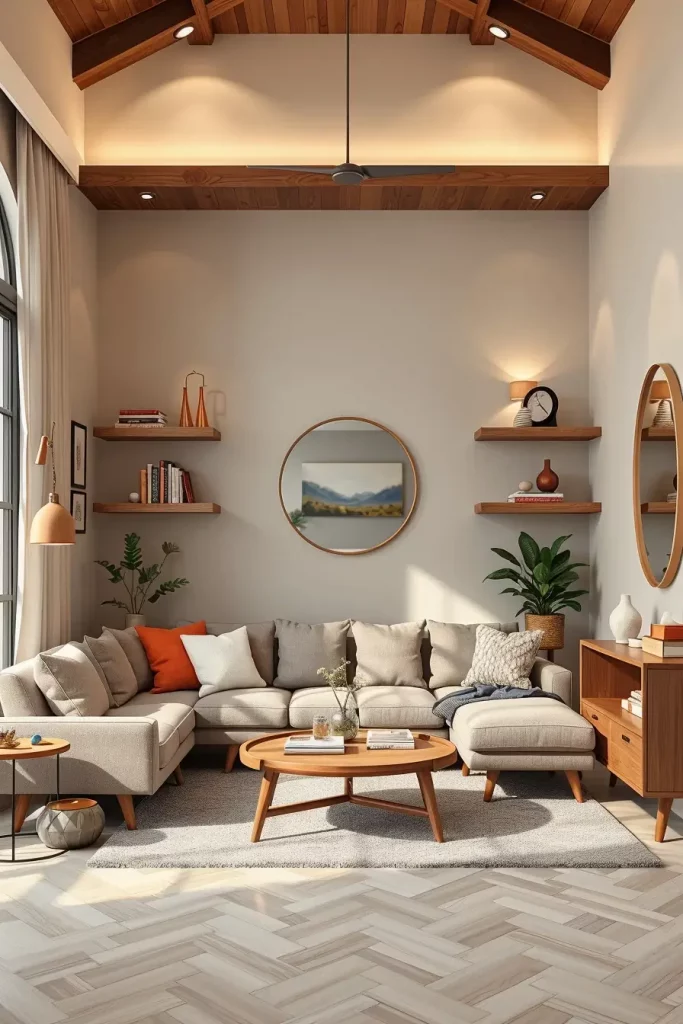
I prefer to use apartment-scaled sectionals or modular seats coupled with floating shelves for storage. Using mirrors one can increase visual space and lift a piece of furniture up in order to reveal a more floor space for an open effect. Wall mounted lighting and fold out tables are also a help in terms of maximizing square footage. Uniformity of color palette with light colors on furnishings, walls, and flooring facilitates the lack of a boxed-in sense.
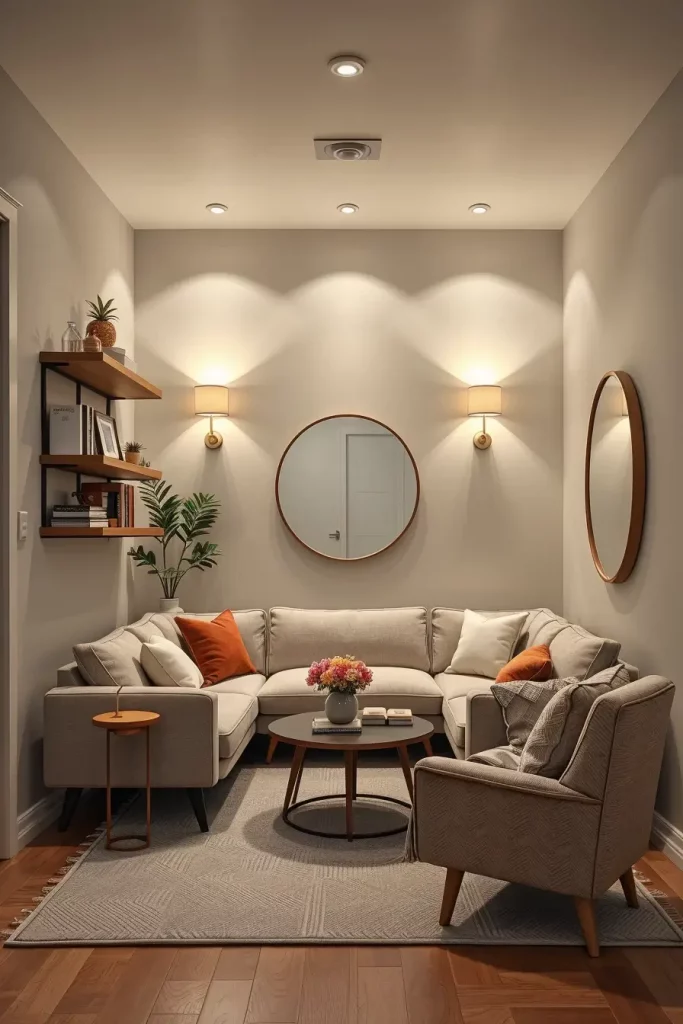
Small rooms, to my mind, require more pointed editing but offer room for eye-wrenching design. The Dwell magazine always advertises multifunctional furniture and light textures for limited spaces, and this advice is not something I treat carelessly. The aim is to make each item work as much as possible without undermining an overall theme.
One addition I often make? A curtain or panel that can be mounted to the ceiling to separate off part of the room for privacy or actual division of the space without stealing “real estate”.
Large Keeping Rooms With Defined Zones
In case you are lucky enough to have a large keeping room then establishing different areas will do the trick to keep warmth and structure. Other than that, the space may appear disconnected or under used. Quite often when working with such layouts, I start with the central hub that is followed by the smaller vignettes.
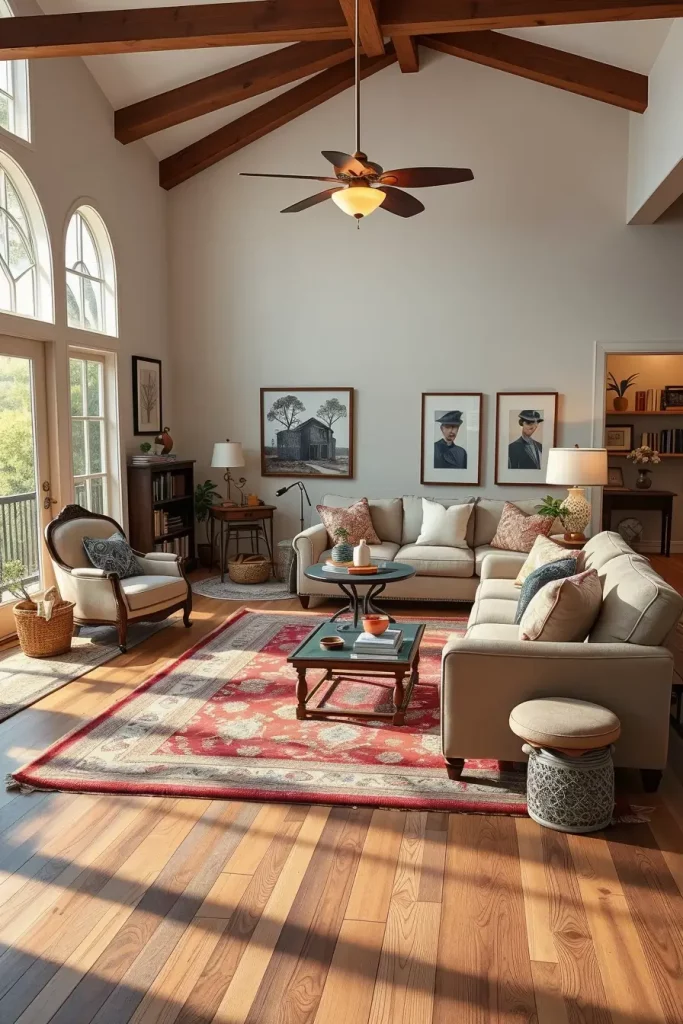
Ground the room with a central conversation space, usually a big sectional, round coffee table, and the accompanying chairs. To one of the sides, create a reading nook or writing desk with task lighting. On the flipside, there is the possibility of an additional activity through the use of a casual dining or craft table. Use rugs, lightings, and arrangement of furniture to create open boundaries on each space.
This technique has been especially useful in open-plan houses. Architectural Digest insists that functional separation in large spaces is crucial to usability and I’ve witnessed through personal experience how zoning transforms large spaces to be cosy and of use.
See if you can work in minor architectural features such as beams in the ceiling or half-walls to strengthen the zones. This maintains everything feeling to be grounded while eliminating flow.
Seasonal Decor Swaps To Refresh The Space
Apart from the traditional home improvements, one of the easiest of methods to maintain your keeping room is by decor-updating on the seasons. I invite the clients to consider the space as a living organism that changes with mood, climate, and even by family events. It’s low-commitment but high-impact.
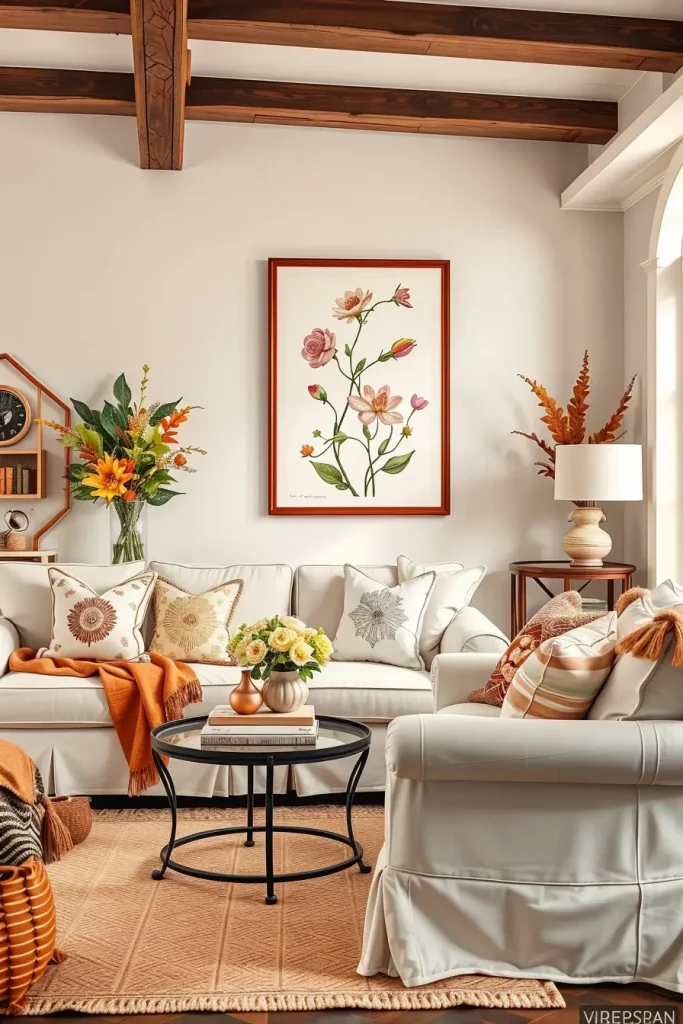
For the fall, introduce rust colored throws, copper detail and textured pillows. In spring change them into pastel linen and botanical print, as well as fresh flowers. I like to change the artwork, as well – be it framed illustrations for the current season or recent holiday pictures of my family. A wreath or new curtains or a new slipcover can also transform the whole vibe.

To date, when it comes to my own house, I do it seasonally, and I always advise the clients to do so. According to Martha Stewart Living, you ought to treat your home as a wardrobe: layer and rotate accordingly. It helps to keep things fresh and promotes a new perspective every quarter.
I also recommend creating a small decor storage area nearby (in a bench or cabinet) to make swapping quick and easy. That way, you’re more likely to keep the tradition going.
Using Mirrors To Enhance Depth And Light
As design conduit in a room, mirrors often are under utilised. I depend on them to reflect light, make the spaces look bigger, or accentuate the architecture. It was one of the simplest effects of creating depth and openness, and it works especially well in tight or darker rooms.
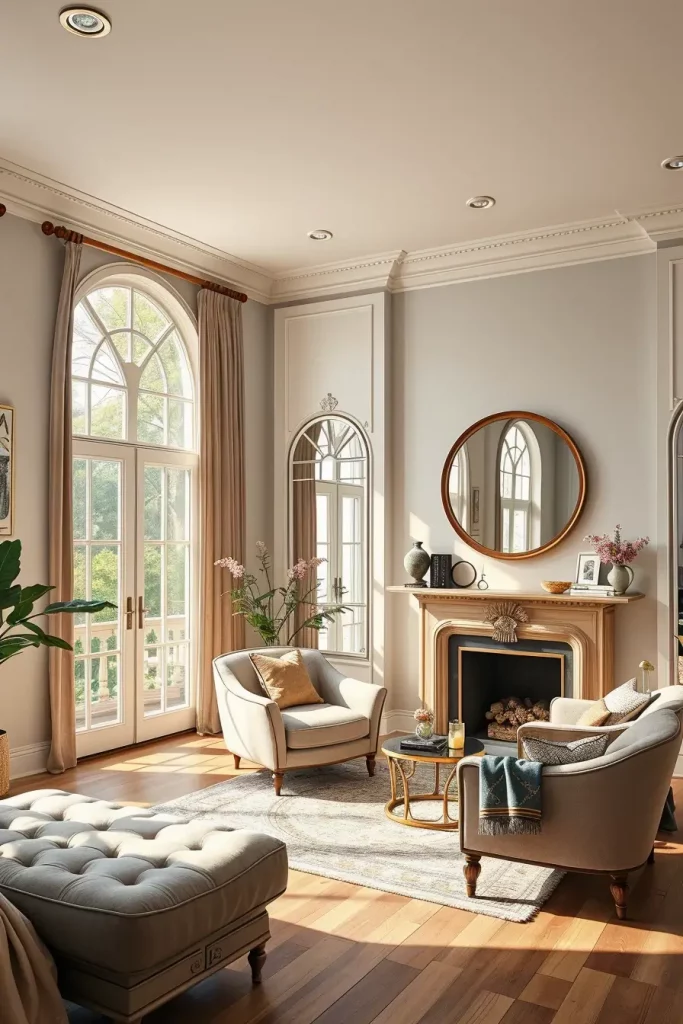
Install a large mirror opposite to a window to double the light. I also enjoy using round or arched mirrors over mantels or consoles to make a room’s lines more palatable. If you want a modern look, grid-style floor mirror should be your choice. for an old school look, aged glass and a fancy frame is the way to go. Other playful visual interest is created by smaller mirrors grouped in a gallery style.
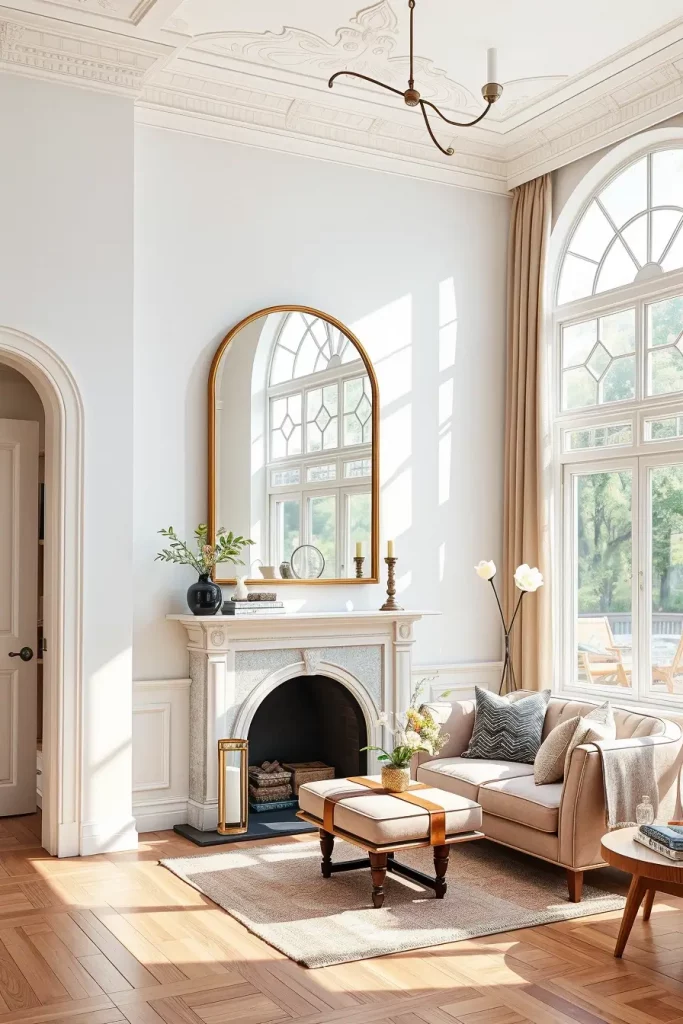
I have learned that mirrors can be used as windows in rooms without any. To create a casual, editorial effect, Domino suggests leaning large mirrors casually up against a wall, which is something I’ve done many times and experienced successful results. It works especially in transitional spaces.
For optimal effect, combine mirrors with diffused light – lamps or sconces in the vicinity will increase the bounce and the warmth, and the whole room will glow.
Decorative Ceilings As A Design Statement
When I first thought about a way to precede the look of my keeping room, the ceiling was not the first place that I looked to – but that changed once I considered incorporating the idea of utilising decorative ceilings as a focal point. In contemporary interior design, a statement ceiling can create a room as well as furniture or wall art can. Whether from coffered designs to wood beams or painted patterns, the ceiling can provide architectural interest and guide the mood of the entire area. It’s very convenient especially in a keeping room, where comfort cojoins visual sophistication.
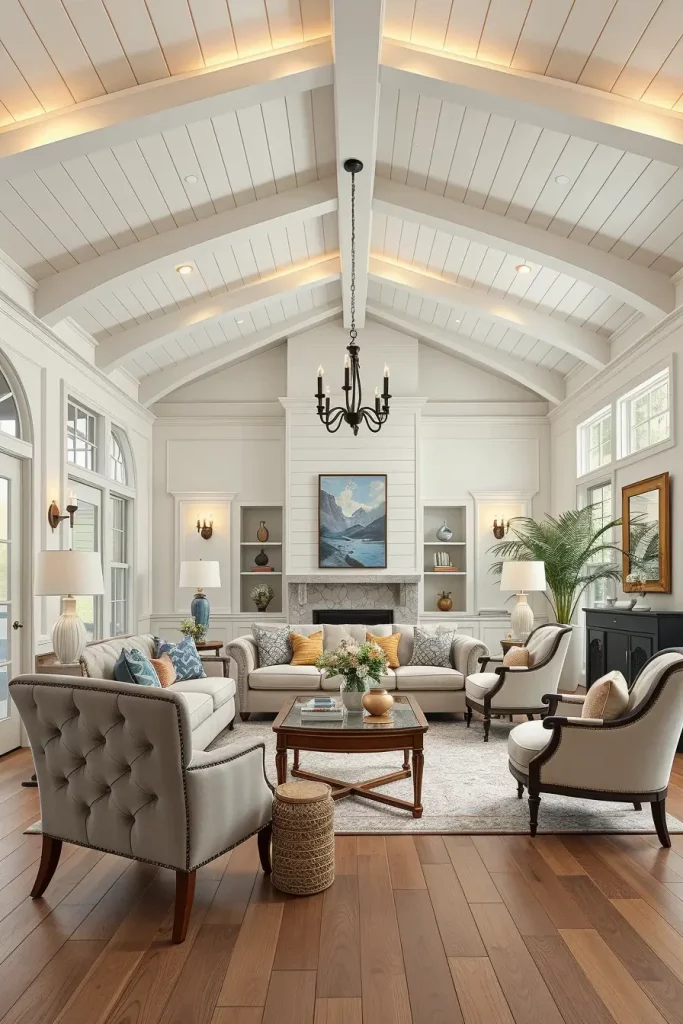
In my last projects I have added such things as the combination of white painted wood beams and shiplap panels or soft tray ceilings with gentle lighting. Such details attract the gaze, giving the impression of the height. Decorative ceiling trim can also coordinate with the already available furniture i.e. tufted sofas or classic armchairs giving the room more uniformity.
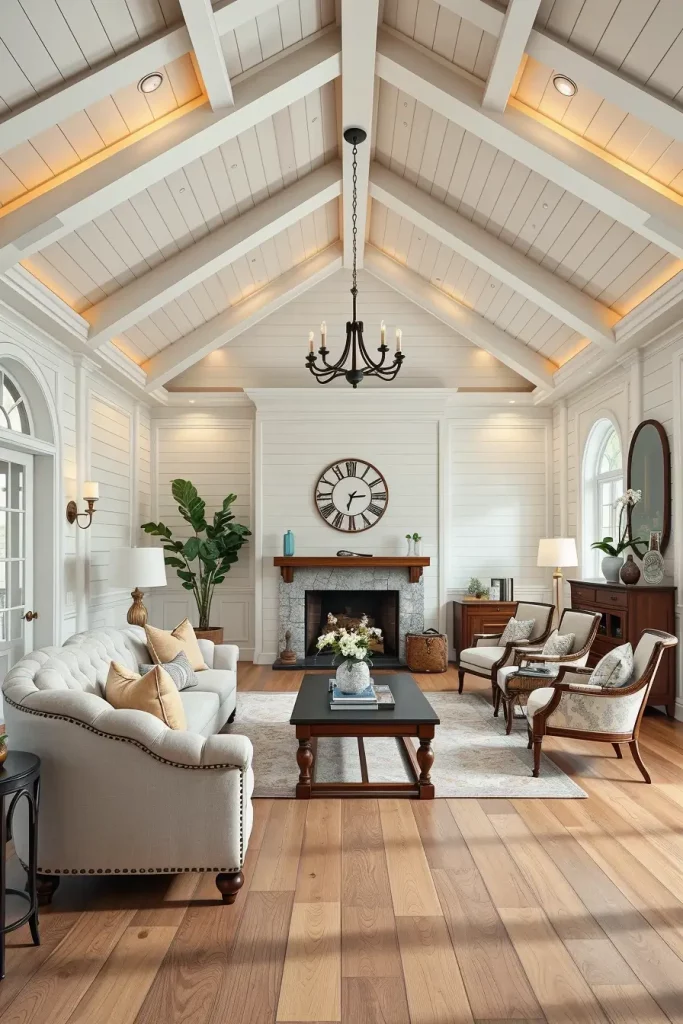
To me, clients are very responsive to ceiling detail. One went so far as to say that “it felt like stepping into a high end magazine spread.” Architectural ceiling elements that expert such as Joanna Gaines focuses on are said to add depth and history to transitional spaces. It is a piece of advice which I fully support. A ceiling that is carefully planed out is not just decoration; it is support and narration.
I would include integrated lighting fixtures that include flush chandeliers, layered lights in the form of LED rope lighting within crown molding. These enhancements do not only create ambiance but also make the space modern in use.
Art And Gallery Walls With Personal Meaning
Personal stories through gallery walls are one of my favourite methods of making a keeping room one’s home. The art is strong – it creates emotion, texture, and story in any environment. When it comes to keeping room, which connects kitchen and living space, the artwork should seem familiarized and detailed though orchestrated moments, history, or even an owner’s style in modern design.
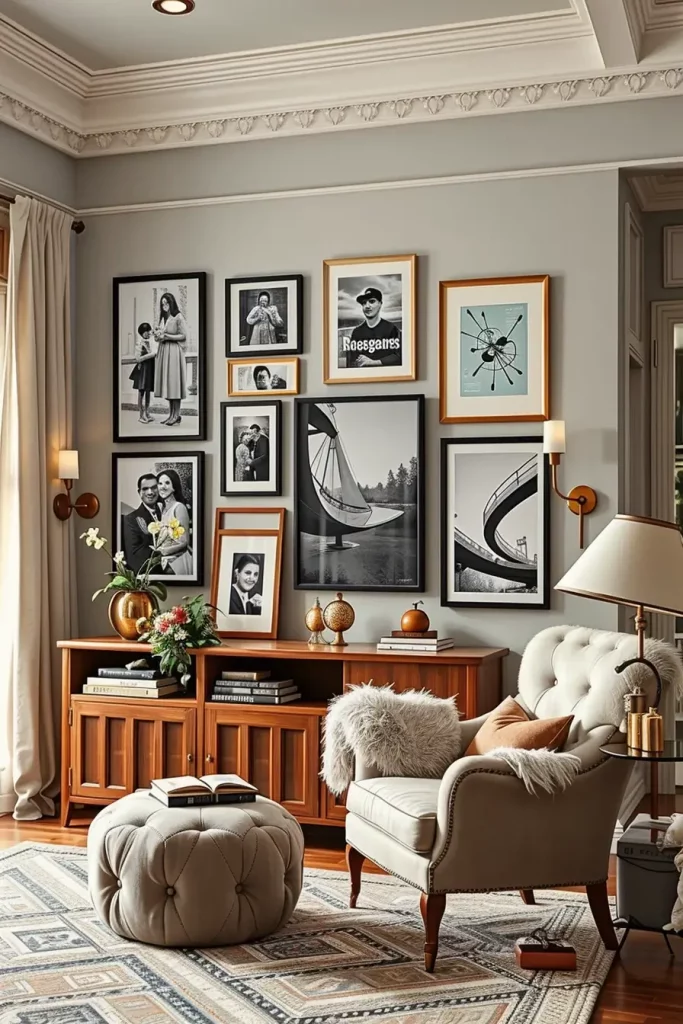
I tend to begin with such a major feature piece as a canvas landscape or abstract painting over a credenza or fireplace. Then, I add smaller black-and-white photographs in mixed frames, collected prints, or sentimental things like a framed recipe or children’s drawings. This blend is both balancing and intriguing. The surrounding furniture –plush loveseats, a vintage sideboard, a cozy reading chair-provides the natural frame for this art statement.
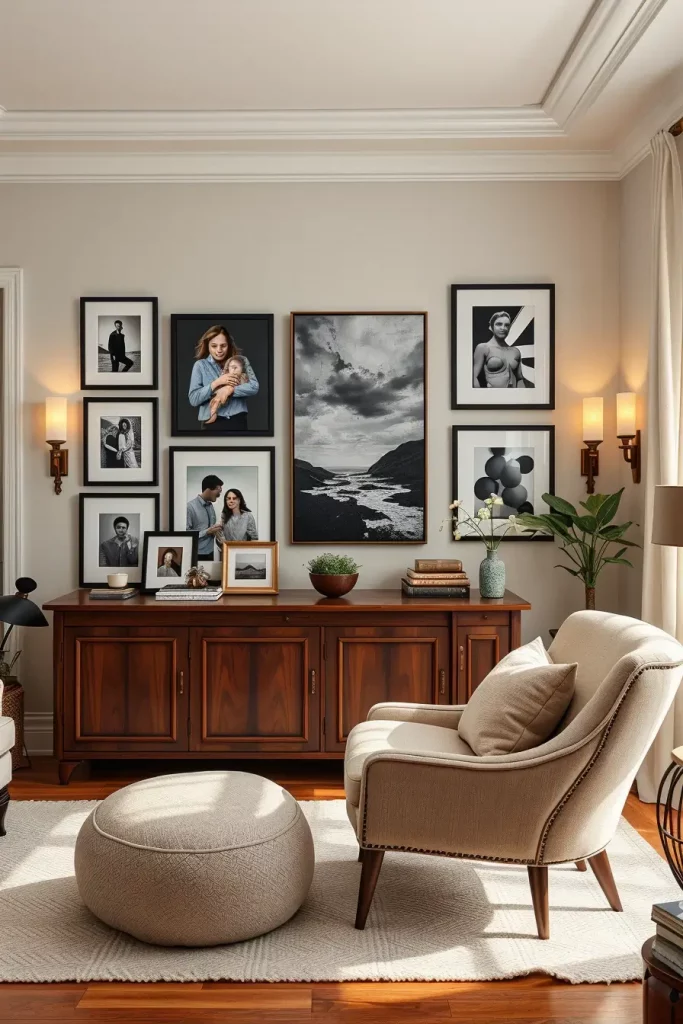
From my own experience of helping my clients, investing time on creating personal gallery walls, makes clients come and spend more time in their keeping rooms. There is a project I remember in Virginia and the homeowner stated that her gallery wall was a conversation starter during every gathering. According to the Architectural Digest, gallery walls look best if achieved by spacing objects and painting them in the shades of a single color, which I suggest to everyone.
To improve this space, I would add adjustable art lighting or sconces, accents for highlighting focal points and think of installing floating shelves to have rotating works of arts around the year.
Keeping Room Ideas For Entertaining Guests
A properly designed keeping room isn’t only meant for the usage by the family but a place that can be made ideal for entertaining guests as well. I love the way these spaces are flexible social spaces around the kitchen, where host can even continue talking while preparing meals. Making a comfortable and welcoming place is important to any host, and the keeping room is an extension of hospitality.
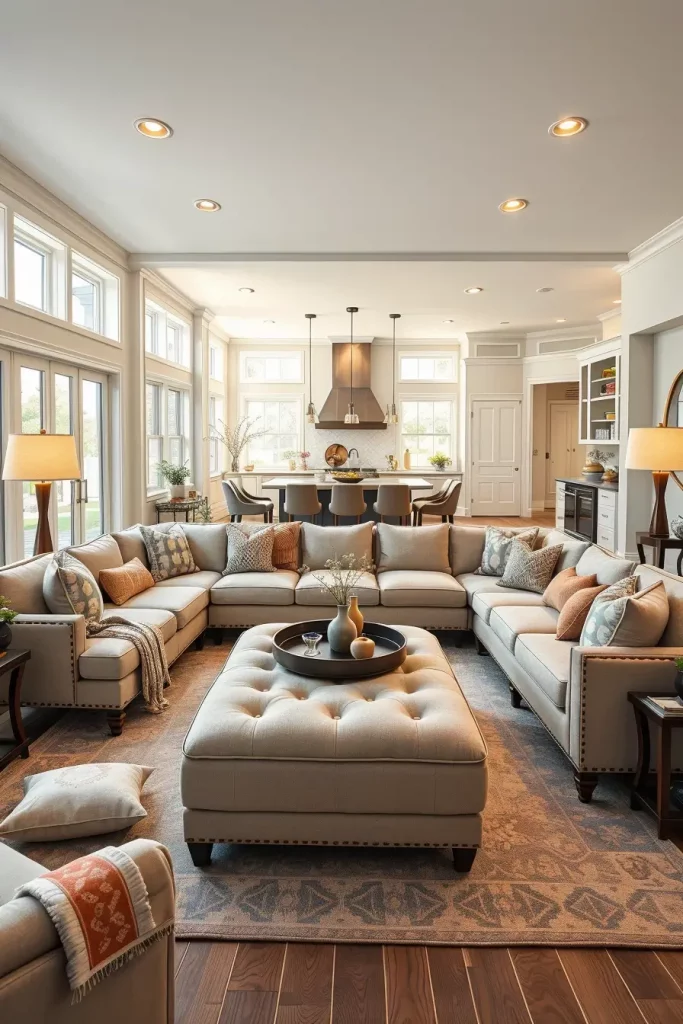
I would suggest sitting in a U shape or L shape with modular sectionals, a big focal ottoman or coffee table for food trays shared. Inset end tables for drinks and floor seating (poufs or floor pillows) for casual overflow seating. An in-built bar cart or wine cabinet nearby will be a great feature. Everything works together to establish a good flow between casual dining, relaxing and light conversations.
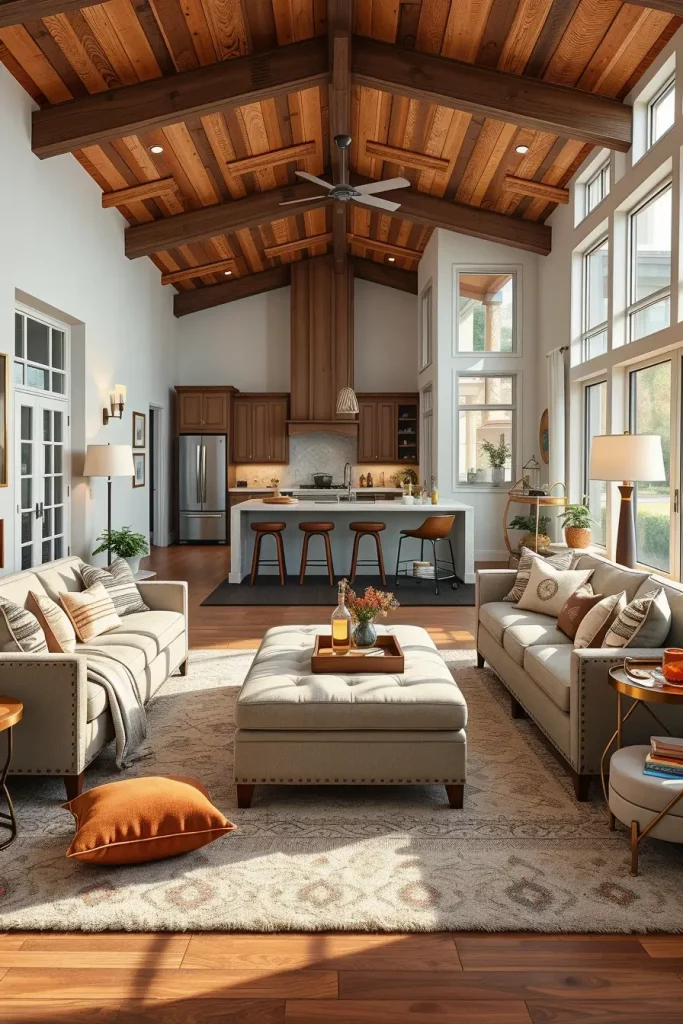
I’ve held numerous open house-type parties where the keeping room was the room to be used most often and people headed to it before entering into the living room. HGTV experts propose using the layered lighting and multipurpose furniture to ensure these areas are not only beautiful but functional when entertaining. I always include dimmable sconces and soft lamps for the aspect of ambiance.
What’s missing? I would recommend a Bluetooth speaker buried in the cabinetry and perhaps a little serving hutch with accent dishes, to smooth out entertaining.
Blending The Kitchen And Keeping Room Seamlessly
One of the most popular requests feature for my projects right now is the smooth integration between the kitchen and keeping room. This is not only beautiful trend, it is a working trend. By permitting visual and spatial connection between these two important spaces, homeowners will enjoy smooth traffic, balanced lighting, and better-connected home.
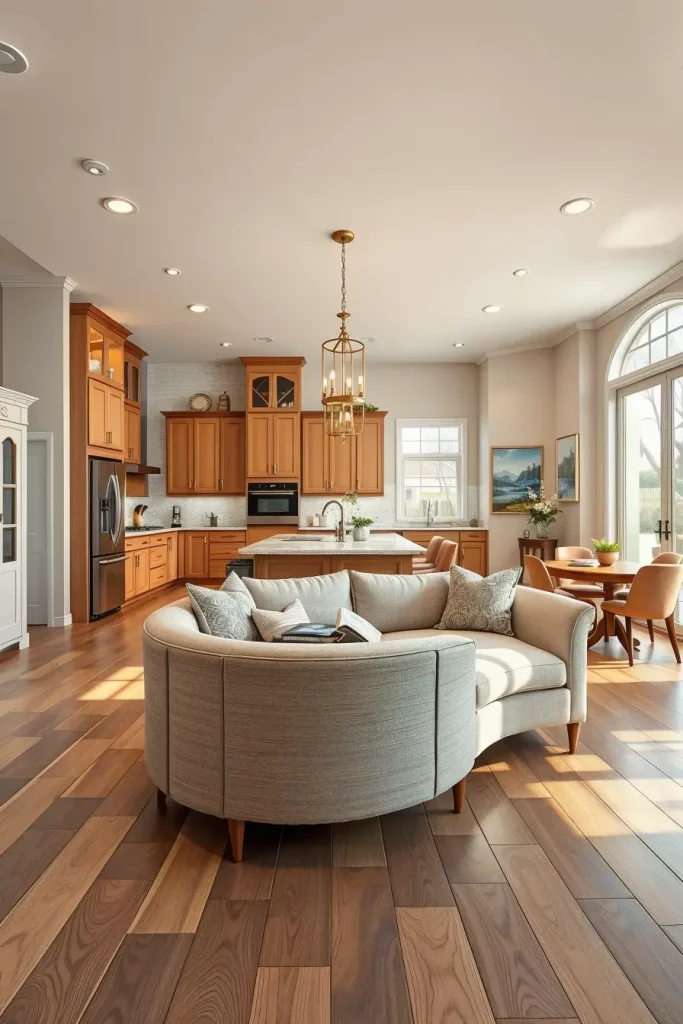
To do this, I remove physical barriers such as half walls and use continuous flooring, similar shades of paint, and similar cabinetry colours to tie the spaces together. Soft area rugs and changes in light create the concept of keeping room without disrupting continuity. Furniture should feel transitional: My frequent touches include curved sofa or slipcovered armchairs that match the finishes or color of the kitchen island or cabinetry.
From my very own design studio, I have experienced outstanding results when continuity is observed throughout spaces. One home owner said that the cohesion made her home feel “more luxurious and thoughtful”. Popular design practice Studio McGee regularly emphasises the same ideas – repeating material and palette to connect common areas in open plan houses.
I would suggest incorporating a visual device that would tie the two spaces together, such as a common treatment for the ceiling, like an uncovered beamed ceiling or matching, painted tongue-and-groove ceiling, for instance.
It is all about combining the comfort with smart ideas for interior decoration in order to revamp your keeping room into a cozy and elegant refuge. Regardless of whether you’re more a fan of rustic charm or contemporary farmhouse notes or forgotten about soft neutral palettes, all the ideas that we’ve traveled through provide a new way to rethink this special space. Anyone with a preferred design tip / or personal experience to share? I’d love to hear your thoughts—drop a comment below and let’s continue the conversation!
